

10 Current Database Research Topic Ideas in 2024
Home Blog Database 10 Current Database Research Topic Ideas in 2024
As we head towards the second half of 2024, the world of technology evolves at a rapid pace. With the rise of AI and blockchain, the demand for data, its management and the need for security increases rapidly. A logical consequence of these changes is the way fields like database security research topics and DBMS research have come up as the need of the hour.
With new technologies and techniques emerging day-by-day, staying up-to-date with the latest trends in database research topics is crucial. Whether you are a student, researcher, or industry professional, we recommend taking our Database Certification courses to stay current with the latest research topics in DBMS.
In this blog post, we will introduce you to 10 current database research topic ideas that are likely to be at the forefront of the field in 2024. From blockchain-based database systems to real-time data processing with in-memory databases, these topics offer a glimpse into the exciting future of database research.
So, get ready to dive into the exciting world of databases and discover the latest developments in database research topics of 2024!
Blurring the Lines between Blockchains and Database Systems
The intersection of blockchain technology and database systems offers fertile new grounds to anyone interested in database research.
As blockchain gains popularity, many thesis topics in DBMS[1] are exploring ways to integrate both fields. This research will yield innovative solutions for data management. Here are 3 ways in which these two technologies are being combined to create powerful new solutions:
Immutable Databases: By leveraging blockchain technology, it’s possible to create databases to be immutable. Once data has been added to such a database, it cannot be modified or deleted. This is particularly useful in situations where data integrity is critical, such as in financial transactions or supply chain management.
Decentralized Databases: Blockchain technology enables the creation of decentralized databases. Here data is stored on a distributed network of computers rather than in a central location. This can help to improve data security and reduce the risk of data loss or corruption.
Smart Contracts: Smart contracts are self-executing contracts with the terms of the agreement between buyer and seller being directly written into lines of code. By leveraging blockchain technology, it is possible to create smart contracts that are stored and executed on a decentralized database, making it possible to automate a wide range of business processes.
Childhood Obesity: Data Management
Childhood obesity is a growing public health concern, with rates of obesity among children and adolescents rising around the world. To address this issue, it’s crucial to have access to comprehensive data on childhood obesity. Analyzing information on prevalence, risk factors, and interventions is a popular research topic in DBMS these days.
Effective data management is essential for ensuring that this information is collected, stored, and analyzed in a way that is useful and actionable. This is one of the hottest DBMS research paper topics. In this section, we will explore the topic of childhood obesity data management.
A key challenge to childhood obesity data management is ensuring data consistency. This is difficult as various organizations have varied methods for measuring and defining obesity. For example:
Some may use body mass index (BMI) as a measure of obesity.
Others may use waist circumference or skinfold thickness. Another challenge is ensuring data security and preventing unauthorized access. To protect the privacy and confidentiality of individuals, it is important to ensure appropriate safeguards are in place. This calls for database security research and appropriate application.
Application of Computer Database Technology in Marketing
Leveraging data and analytics allows businesses to gain a competitive advantage in this digitized world today. With the rising demand for data, the use of computer databases in marketing has gained prominence.
The application of database capabilities in marketing has really come into its own as one of the most popular and latest research topics in DBMS[2]. In this section, we will explore how computer database technology is being applied in marketing, and the benefits this research can offer.
Customer Segmentation: Storage and analysis of customer data makes it possible to gain valuable insights. It allows businesses to identify trends in customer behavior, preferences and demographics. This information can be utilized to create highly targeted customer segments. This is how businesses can tailor their marketing efforts to specific groups of customers.
Personalization: Computer databases can be used to store and analyze customer data in real-time. In this way, businesses can personalize their marketing and offers based on individual customer preferences. This can help increase engagement and loyalty among customers, thereby driving greater revenue for businesses.
Predictive Analytics: Advanced analytics techniques such as machine learning and predictive modeling can throw light on patterns in customer behavior. This can even be used to predict their future actions. This information can be used to create more targeted marketing campaigns, and to identify opportunities for cross-selling and upselling.
Database Technology in Sports Competition Information Management
Database technology has revolutionized the way in which sports competition information is managed and analyzed. With the increasing popularity of sports around the world, there is a growing need for effective data management systems that can collect, store, and analyze large volumes of relevant data. Thus, researching database technologies[3] is vital to streamlining operations, improving decision-making, and enhancing the overall quality of events.
Sports organizations can use database technology to collect and manage a wide range of competition-related data such as:
Athlete and team information,
competition schedules and results,
performance metrics, and
spectator feedback.
Collating this data in a distributed database lets sports organizations easily analyze and derive valuable insights. This is emerging as a key DBMS research paper topic.
Database Technology for the Analysis of Spatio-temporal Data
Spatio-temporal data refers to data which has a geographic as well as a temporal component. Meteorological readings, GPS data, and social media content are prime examples of this diverse field. This data can provide valuable insights into patterns and trends across space and time. However, its multidimensional nature makes analysis be super challenging. It’s no surprise that this has become a hot topic for distributed database research[4].
In this section, we will explore how database technology is being used to analyze spatio-temporal data, and the benefits this research offers.
Data Storage and Retrieval: Spatio-temporal data tends to be very high-volume. Advances in database technology are needed to make storage, retrieval and consumption of such information more efficient. A solution to this problem will make such data more available. It will then be easily retrievable and usable by a variety of data analytics tools.
Spatial Indexing: Database technology can create spatial indexes to enable faster queries on spatio-temporal data. This allows analysts to quickly retrieve data for specific geographic locations or areas of interest, and to analyze trends across these areas.
Temporal Querying: Distributed database research can also enable analysts to analyze data over specific time periods. This facilitates the identification of patterns over time. Ultimately, this enhances our understanding of how these patterns evolve over various seasons.
Artificial Intelligence and Database Technology
Artificial intelligence (AI) is another sphere of technology that’s just waiting to be explored. It hints at a wealth of breakthroughs which can change the entire world. It’s unsurprising that the combination of AI with database technology is such a hot topic for database research papers[5] in modern times.
By using AI to analyze data, organizations can identify patterns and relationships that might not be apparent through traditional data analysis methods. In this section, we will explore some of the ways in which AI and database technology are being used together. We’ll also discuss the benefits that this amalgamation can offer.
Predictive Analytics: By analyzing large volumes of organizational and business data, AI can generate predictive models to forecast outcomes. For example, AI can go through customer data stored in a database and predict who is most likely to make a purchase in the near future.
Natural Language Processing: All businesses have huge, untapped wells of valuable information in the form of customer feedback and social media posts. These types of data sources are unstructured, meaning they don’t follow rigid parameters. By using natural language processing (NLP) techniques, AI can extract insights from this data. This helps organizations understand customer sentiment, preferences and needs.
Anomaly Detection: AI can be used to analyze large volumes of data to identify anomalies and outliers. Then, a second round of analysis can be done to pinpoint potential problems or opportunities. For example, AI can analyze sensor data from manufacturing equipment and detect when equipment is operating outside of normal parameters.
Data Collection and Management Techniques of a Qualitative Research Plan
Any qualitative research calls for the collection and management of empirical data. A crucial part of the research process, this step benefits from good database management techniques. Let’s explore some thesis topics in database management systems[6] to ensure the success of a qualitative research plan.
Interviews: This is one of the most common methods of data collection in qualitative research. Interviews can be conducted in person, over the phone, or through video conferencing. A standardized interview guide ensures the data collected is reliable and accurate. Relational databases, with their inherent structure, aid in this process. They are a way to enforce structure onto the interviews’ answers.
Focus Groups: Focus groups involve gathering a small group of people to discuss a particular topic. These generate rich data by allowing participants to share their views in a group setting. It is important to select participants who have knowledge or experience related to the research topic.
Observations: Observations involve observing and recording events in a given setting. These can be conducted openly or covertly, depending on the research objective and setting. To ensure that the data collected is accurate, it is important to develop a detailed observation protocol that outlines what behaviors or events to observe, how to record data, and how to handle ethical issues.
Database Technology in Video Surveillance System
Video surveillance systems are used to monitor and secure public spaces, workplaces, even homes. With the increasing demand for such systems, it’s important to have an efficient and reliable way to store, manage and analyze the data generated. This is where database topics for research paper [7] come in.
By using database technology in video surveillance systems, it is possible to store and manage large amounts of video data efficiently. Database management systems (DBMS) can be used to organize video data in a way that is easily searchable and retrievable. This is particularly important in cases where video footage is needed as evidence in criminal investigations or court cases.
In addition to storage and management, database technology can also be used to analyze video data. For example, machine learning algorithms can be applied to video data to identify patterns and anomalies that may indicate suspicious activity. This can help law enforcement agencies and security personnel to identify and respond to potential threats more quickly and effectively.
Application of Java Technology in Dynamic Web Database Technology
Java technology has proven its flexibility, scalability, and ease of use over the decades. This makes it widely used in the development of dynamic web database applications. In this section, we will explore research topics in DBMS[8] which seek to apply Java technology in databases.
Java Server Pages (JSP): JSP is a Java technology that is used to create dynamic web pages that can interact with databases. It allows developers to embed Java code within HTML scripts, thereby enabling dynamic web pages. These can interact with databases in real-time, and aid in data collection and maintenance.
Java Servlets: Java Servlets are Java classes used to extend the functionality of web servers. They provide a way to handle incoming requests from web browsers and generate dynamic content that can interact with databases.
Java Database Connectivity (JDBC): JDBC is a Java API that provides a standard interface for accessing databases. It allows Java applications to connect to databases. It can SQL queries to enhance, modify or control the backend database. This enables developers to create dynamic web applications.
Online Multi Module Educational Administration System Based on Time Difference Database Technology
With the widespread adoption of remote learning post-COVID, online educational systems are gaining popularity at a rapid pace. A ubiquitous challenge these systems face is managing multiple modules across different time zones. This is one of the latest research topics in database management systems[9].
Time difference database technology is designed to handle time zone differences in online systems. By leveraging this, it’s possible to create a multi-module educational administration system that can handle users from different parts of the world, with different time zones.
This type of system can be especially useful for online universities or other educational institutions that have a global reach:
It makes it possible to schedule classes, assignments and other activities based on the user's time zone, ensuring that everyone can participate in real-time.
In addition to managing time zones, a time difference database system can also help manage student data, course materials, grades, and other important information.
Why is it Important to Study Databases?
Databases are the backbone of many modern technologies and applications, making it essential for professionals in various fields to understand how they work. Whether you're a software developer, data analyst or a business owner, understanding databases is critical to success in today's world. Here are a few reasons why it is important to study databases and more database topics for research paper should be published:
Efficient Data Management
Databases enable the efficient storage, organization, and retrieval of data. By studying databases, you can learn how to design and implement effective data management systems that can help organizations store, analyze, and use data efficiently.
Improved Decision-Making
Data is essential for making informed decisions, and databases provide a reliable source of data for analysis. By understanding databases, you can learn how to retrieve and analyze data to inform business decisions, identify trends, and gain insights.
Career Opportunities
In today's digital age, many career paths require knowledge of databases. By studying databases, you can open up new career opportunities in software development, data analysis, database administration and related fields.
Needless to say, studying databases is essential for anyone who deals with data. Whether you're looking to start a new career or enhance your existing skills, studying databases is a critical step towards success in today's data-driven world.
Final Takeaways
In conclusion, as you are interested in database technology, we hope this blog has given you some insights into the latest research topics in the field. From blockchain to AI, from sports to marketing, there are a plethora of exciting database topics for research papers that will shape the future of database technology.
As technology continues to evolve, it is essential to stay up-to-date with the latest trends in the field of databases. Our curated KnowledgeHut Database Certification Courses will help you stay ahead of the curve and develop new skills.
We hope this blog has inspired you to explore the exciting world of database research in 2024. Stay curious and keep learning!
Frequently Asked Questions (FAQs)
There are several examples of databases, with the five most common ones being:
MySQL : An open-source RDBMS used commonly in web applications.
Microsoft SQL Server : A popular RDBMS used in enterprise environments.
Oracle : A trusted commercial RDBMS famous for its high-scalability and security.
MongoDB : A NoSQL document-oriented database optimized for storing large amounts of unstructured data.
PostgreSQL : An open-source RDBMS offering advanced features like high concurrency and support for multiple data types.
Structured Query Language (SQL) is a high-level language designed to communicate with relational databases. It’s not a database in and of itself. Rather, it’s a language used to create, modify, and retrieve data from relational databases such as MySQL and Oracle.
A primary key is a column (or a set of columns) that uniquely identifies each row in a table. In technical terms, the primary key is a unique identifier of records. It’s used as a reference to establish relationships between various tables.

Monica Gupta
I am Monica Gupta with 19+ years of experience in the field of Training and Development. I have done over 500 Corporate Trainings. I am currently working as a freelancer for several years. My core area of work is Java, C++, Angular, PHP, Python, VBA.
Avail your free 1:1 mentorship session.
Something went wrong
Upcoming Database Batches & Dates

37 Research Topics In Data Science To Stay On Top Of
- February 22, 2024
As a data scientist, staying on top of the latest research in your field is essential.
The data science landscape changes rapidly, and new techniques and tools are constantly being developed.
To keep up with the competition, you need to be aware of the latest trends and topics in data science research.
In this article, we will provide an overview of 37 hot research topics in data science.
We will discuss each topic in detail, including its significance and potential applications.
These topics could be an idea for a thesis or simply topics you can research independently.
Stay tuned – this is one blog post you don’t want to miss!
37 Research Topics in Data Science
1.) predictive modeling.
Predictive modeling is a significant portion of data science and a topic you must be aware of.
Simply put, it is the process of using historical data to build models that can predict future outcomes.
Predictive modeling has many applications, from marketing and sales to financial forecasting and risk management.
As businesses increasingly rely on data to make decisions, predictive modeling is becoming more and more important.
While it can be complex, predictive modeling is a powerful tool that gives businesses a competitive advantage.

2.) Big Data Analytics
These days, it seems like everyone is talking about big data.
And with good reason – organizations of all sizes are sitting on mountains of data, and they’re increasingly turning to data scientists to help them make sense of it all.
But what exactly is big data? And what does it mean for data science?
Simply put, big data is a term used to describe datasets that are too large and complex for traditional data processing techniques.
Big data typically refers to datasets of a few terabytes or more.
But size isn’t the only defining characteristic – big data is also characterized by its high Velocity (the speed at which data is generated), Variety (the different types of data), and Volume (the amount of the information).
Given the enormity of big data, it’s not surprising that organizations are struggling to make sense of it all.
That’s where data science comes in.
Data scientists use various methods to wrangle big data, including distributed computing and other decentralized technologies.
With the help of data science, organizations are beginning to unlock the hidden value in their big data.
By harnessing the power of big data analytics, they can improve their decision-making, better understand their customers, and develop new products and services.
3.) Auto Machine Learning
Auto machine learning is a research topic in data science concerned with developing algorithms that can automatically learn from data without intervention.
This area of research is vital because it allows data scientists to automate the process of writing code for every dataset.
This allows us to focus on other tasks, such as model selection and validation.
Auto machine learning algorithms can learn from data in a hands-off way for the data scientist – while still providing incredible insights.
This makes them a valuable tool for data scientists who either don’t have the skills to do their own analysis or are struggling.

4.) Text Mining
Text mining is a research topic in data science that deals with text data extraction.
This area of research is important because it allows us to get as much information as possible from the vast amount of text data available today.
Text mining techniques can extract information from text data, such as keywords, sentiments, and relationships.
This information can be used for various purposes, such as model building and predictive analytics.
5.) Natural Language Processing
Natural language processing is a data science research topic that analyzes human language data.
This area of research is important because it allows us to understand and make sense of the vast amount of text data available today.
Natural language processing techniques can build predictive and interactive models from any language data.
Natural Language processing is pretty broad, and recent advances like GPT-3 have pushed this topic to the forefront.

6.) Recommender Systems
Recommender systems are an exciting topic in data science because they allow us to make better products, services, and content recommendations.
Businesses can better understand their customers and their needs by using recommender systems.
This, in turn, allows them to develop better products and services that meet the needs of their customers.
Recommender systems are also used to recommend content to users.
This can be done on an individual level or at a group level.
Think about Netflix, for example, always knowing what you want to watch!
Recommender systems are a valuable tool for businesses and users alike.
7.) Deep Learning
Deep learning is a research topic in data science that deals with artificial neural networks.
These networks are composed of multiple layers, and each layer is formed from various nodes.
Deep learning networks can learn from data similarly to how humans learn, irrespective of the data distribution.
This makes them a valuable tool for data scientists looking to build models that can learn from data independently.
The deep learning network has become very popular in recent years because of its ability to achieve state-of-the-art results on various tasks.
There seems to be a new SOTA deep learning algorithm research paper on https://arxiv.org/ every single day!
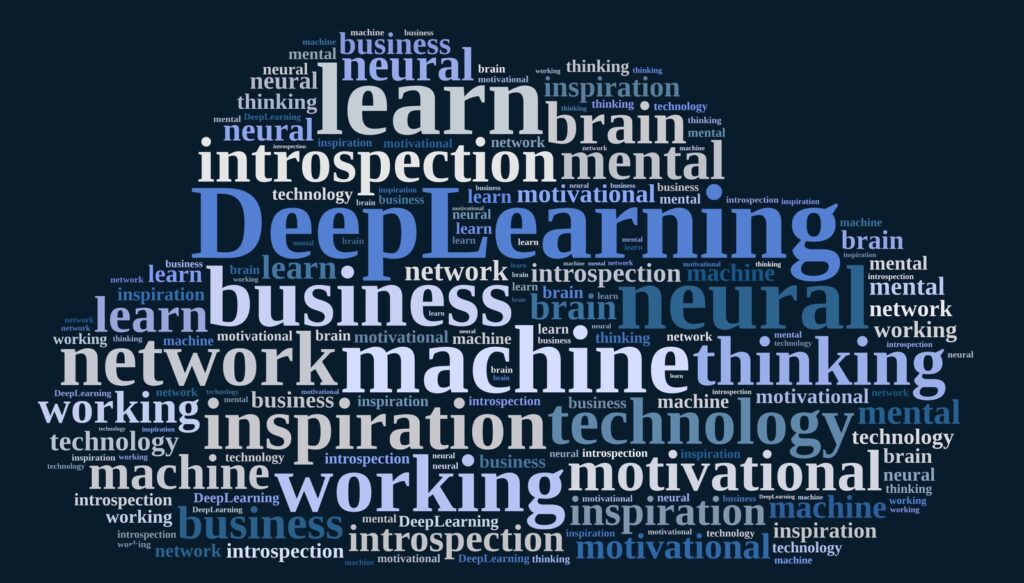
8.) Reinforcement Learning
Reinforcement learning is a research topic in data science that deals with algorithms that can learn on multiple levels from interactions with their environment.
This area of research is essential because it allows us to develop algorithms that can learn non-greedy approaches to decision-making, allowing businesses and companies to win in the long term compared to the short.
9.) Data Visualization
Data visualization is an excellent research topic in data science because it allows us to see our data in a way that is easy to understand.
Data visualization techniques can be used to create charts, graphs, and other visual representations of data.
This allows us to see the patterns and trends hidden in our data.
Data visualization is also used to communicate results to others.
This allows us to share our findings with others in a way that is easy to understand.
There are many ways to contribute to and learn about data visualization.
Some ways include attending conferences, reading papers, and contributing to open-source projects.
10.) Predictive Maintenance
Predictive maintenance is a hot topic in data science because it allows us to prevent failures before they happen.
This is done using data analytics to predict when a failure will occur.
This allows us to take corrective action before the failure actually happens.
While this sounds simple, avoiding false positives while keeping recall is challenging and an area wide open for advancement.
11.) Financial Analysis
Financial analysis is an older topic that has been around for a while but is still a great field where contributions can be felt.
Current researchers are focused on analyzing macroeconomic data to make better financial decisions.
This is done by analyzing the data to identify trends and patterns.
Financial analysts can use this information to make informed decisions about where to invest their money.
Financial analysis is also used to predict future economic trends.
This allows businesses and individuals to prepare for potential financial hardships and enable companies to be cash-heavy during good economic conditions.
Overall, financial analysis is a valuable tool for anyone looking to make better financial decisions.

12.) Image Recognition
Image recognition is one of the hottest topics in data science because it allows us to identify objects in images.
This is done using artificial intelligence algorithms that can learn from data and understand what objects you’re looking for.
This allows us to build models that can accurately recognize objects in images and video.
This is a valuable tool for businesses and individuals who want to be able to identify objects in images.
Think about security, identification, routing, traffic, etc.
Image Recognition has gained a ton of momentum recently – for a good reason.
13.) Fraud Detection
Fraud detection is a great topic in data science because it allows us to identify fraudulent activity before it happens.
This is done by analyzing data to look for patterns and trends that may be associated with the fraud.
Once our machine learning model recognizes some of these patterns in real time, it immediately detects fraud.
This allows us to take corrective action before the fraud actually happens.
Fraud detection is a valuable tool for anyone who wants to protect themselves from potential fraudulent activity.
14.) Web Scraping
Web scraping is a controversial topic in data science because it allows us to collect data from the web, which is usually data you do not own.
This is done by extracting data from websites using scraping tools that are usually custom-programmed.
This allows us to collect data that would otherwise be inaccessible.
For obvious reasons, web scraping is a unique tool – giving you data your competitors would have no chance of getting.
I think there is an excellent opportunity to create new and innovative ways to make scraping accessible for everyone, not just those who understand Selenium and Beautiful Soup.
15.) Social Media Analysis
Social media analysis is not new; many people have already created exciting and innovative algorithms to study this.
However, it is still a great data science research topic because it allows us to understand how people interact on social media.
This is done by analyzing data from social media platforms to look for insights, bots, and recent societal trends.
Once we understand these practices, we can use this information to improve our marketing efforts.
For example, if we know that a particular demographic prefers a specific type of content, we can create more content that appeals to them.
Social media analysis is also used to understand how people interact with brands on social media.
This allows businesses to understand better what their customers want and need.
Overall, social media analysis is valuable for anyone who wants to improve their marketing efforts or understand how customers interact with brands.

16.) GPU Computing
GPU computing is a fun new research topic in data science because it allows us to process data much faster than traditional CPUs .
Due to how GPUs are made, they’re incredibly proficient at intense matrix operations, outperforming traditional CPUs by very high margins.
While the computation is fast, the coding is still tricky.
There is an excellent research opportunity to bring these innovations to non-traditional modules, allowing data science to take advantage of GPU computing outside of deep learning.
17.) Quantum Computing
Quantum computing is a new research topic in data science and physics because it allows us to process data much faster than traditional computers.
It also opens the door to new types of data.
There are just some problems that can’t be solved utilizing outside of the classical computer.
For example, if you wanted to understand how a single atom moved around, a classical computer couldn’t handle this problem.
You’ll need to utilize a quantum computer to handle quantum mechanics problems.
This may be the “hottest” research topic on the planet right now, with some of the top researchers in computer science and physics worldwide working on it.
You could be too.

18.) Genomics
Genomics may be the only research topic that can compete with quantum computing regarding the “number of top researchers working on it.”
Genomics is a fantastic intersection of data science because it allows us to understand how genes work.
This is done by sequencing the DNA of different organisms to look for insights into our and other species.
Once we understand these patterns, we can use this information to improve our understanding of diseases and create new and innovative treatments for them.
Genomics is also used to study the evolution of different species.
Genomics is the future and a field begging for new and exciting research professionals to take it to the next step.
19.) Location-based services
Location-based services are an old and time-tested research topic in data science.
Since GPS and 4g cell phone reception became a thing, we’ve been trying to stay informed about how humans interact with their environment.
This is done by analyzing data from GPS tracking devices, cell phone towers, and Wi-Fi routers to look for insights into how humans interact.
Once we understand these practices, we can use this information to improve our geotargeting efforts, improve maps, find faster routes, and improve cohesion throughout a community.
Location-based services are used to understand the user, something every business could always use a little bit more of.
While a seemingly “stale” field, location-based services have seen a revival period with self-driving cars.

20.) Smart City Applications
Smart city applications are all the rage in data science research right now.
By harnessing the power of data, cities can become more efficient and sustainable.
But what exactly are smart city applications?
In short, they are systems that use data to improve city infrastructure and services.
This can include anything from traffic management and energy use to waste management and public safety.
Data is collected from various sources, including sensors, cameras, and social media.
It is then analyzed to identify tendencies and habits.
This information can make predictions about future needs and optimize city resources.
As more and more cities strive to become “smart,” the demand for data scientists with expertise in smart city applications is only growing.
21.) Internet Of Things (IoT)
The Internet of Things, or IoT, is exciting and new data science and sustainability research topic.
IoT is a network of physical objects embedded with sensors and connected to the internet.
These objects can include everything from alarm clocks to refrigerators; they’re all connected to the internet.
That means that they can share data with computers.
And that’s where data science comes in.
Data scientists are using IoT data to learn everything from how people use energy to how traffic flows through a city.
They’re also using IoT data to predict when an appliance will break down or when a road will be congested.
Really, the possibilities are endless.
With such a wide-open field, it’s easy to see why IoT is being researched by some of the top professionals in the world.

22.) Cybersecurity
Cybersecurity is a relatively new research topic in data science and in general, but it’s already garnering a lot of attention from businesses and organizations.
After all, with the increasing number of cyber attacks in recent years, it’s clear that we need to find better ways to protect our data.
While most of cybersecurity focuses on infrastructure, data scientists can leverage historical events to find potential exploits to protect their companies.
Sometimes, looking at a problem from a different angle helps, and that’s what data science brings to cybersecurity.
Also, data science can help to develop new security technologies and protocols.
As a result, cybersecurity is a crucial data science research area and one that will only become more important in the years to come.
23.) Blockchain
Blockchain is an incredible new research topic in data science for several reasons.
First, it is a distributed database technology that enables secure, transparent, and tamper-proof transactions.
Did someone say transmitting data?
This makes it an ideal platform for tracking data and transactions in various industries.
Second, blockchain is powered by cryptography, which not only makes it highly secure – but is a familiar foe for data scientists.
Finally, blockchain is still in its early stages of development, so there is much room for research and innovation.
As a result, blockchain is a great new research topic in data science that vows to revolutionize how we store, transmit and manage data.

24.) Sustainability
Sustainability is a relatively new research topic in data science, but it is gaining traction quickly.
To keep up with this demand, The Wharton School of the University of Pennsylvania has started to offer an MBA in Sustainability .
This demand isn’t shocking, and some of the reasons include the following:
Sustainability is an important issue that is relevant to everyone.
Datasets on sustainability are constantly growing and changing, making it an exciting challenge for data scientists.
There hasn’t been a “set way” to approach sustainability from a data perspective, making it an excellent opportunity for interdisciplinary research.
As data science grows, sustainability will likely become an increasingly important research topic.
25.) Educational Data
Education has always been a great topic for research, and with the advent of big data, educational data has become an even richer source of information.
By studying educational data, researchers can gain insights into how students learn, what motivates them, and what barriers these students may face.
Besides, data science can be used to develop educational interventions tailored to individual students’ needs.
Imagine being the researcher that helps that high schooler pass mathematics; what an incredible feeling.
With the increasing availability of educational data, data science has enormous potential to improve the quality of education.

26.) Politics
As data science continues to evolve, so does the scope of its applications.
Originally used primarily for business intelligence and marketing, data science is now applied to various fields, including politics.
By analyzing large data sets, political scientists (data scientists with a cooler name) can gain valuable insights into voting patterns, campaign strategies, and more.
Further, data science can be used to forecast election results and understand the effects of political events on public opinion.
With the wealth of data available, there is no shortage of research opportunities in this field.
As data science evolves, so does our understanding of politics and its role in our world.
27.) Cloud Technologies
Cloud technologies are a great research topic.
It allows for the outsourcing and sharing of computer resources and applications all over the internet.
This lets organizations save money on hardware and maintenance costs while providing employees access to the latest and greatest software and applications.
I believe there is an argument that AWS could be the greatest and most technologically advanced business ever built (Yes, I know it’s only part of the company).
Besides, cloud technologies can help improve team members’ collaboration by allowing them to share files and work on projects together in real-time.
As more businesses adopt cloud technologies, data scientists must stay up-to-date on the latest trends in this area.
By researching cloud technologies, data scientists can help organizations to make the most of this new and exciting technology.

28.) Robotics
Robotics has recently become a household name, and it’s for a good reason.
First, robotics deals with controlling and planning physical systems, an inherently complex problem.
Second, robotics requires various sensors and actuators to interact with the world, making it an ideal application for machine learning techniques.
Finally, robotics is an interdisciplinary field that draws on various disciplines, such as computer science, mechanical engineering, and electrical engineering.
As a result, robotics is a rich source of research problems for data scientists.
29.) HealthCare
Healthcare is an industry that is ripe for data-driven innovation.
Hospitals, clinics, and health insurance companies generate a tremendous amount of data daily.
This data can be used to improve the quality of care and outcomes for patients.
This is perfect timing, as the healthcare industry is undergoing a significant shift towards value-based care, which means there is a greater need than ever for data-driven decision-making.
As a result, healthcare is an exciting new research topic for data scientists.
There are many different ways in which data can be used to improve healthcare, and there is a ton of room for newcomers to make discoveries.

30.) Remote Work
There’s no doubt that remote work is on the rise.
In today’s global economy, more and more businesses are allowing their employees to work from home or anywhere else they can get a stable internet connection.
But what does this mean for data science? Well, for one thing, it opens up a whole new field of research.
For example, how does remote work impact employee productivity?
What are the best ways to manage and collaborate on data science projects when team members are spread across the globe?
And what are the cybersecurity risks associated with working remotely?
These are just a few of the questions that data scientists will be able to answer with further research.
So if you’re looking for a new topic to sink your teeth into, remote work in data science is a great option.
31.) Data-Driven Journalism
Data-driven journalism is an exciting new field of research that combines the best of both worlds: the rigor of data science with the creativity of journalism.
By applying data analytics to large datasets, journalists can uncover stories that would otherwise be hidden.
And telling these stories compellingly can help people better understand the world around them.
Data-driven journalism is still in its infancy, but it has already had a major impact on how news is reported.
In the future, it will only become more important as data becomes increasingly fluid among journalists.
It is an exciting new topic and research field for data scientists to explore.

32.) Data Engineering
Data engineering is a staple in data science, focusing on efficiently managing data.
Data engineers are responsible for developing and maintaining the systems that collect, process, and store data.
In recent years, there has been an increasing demand for data engineers as the volume of data generated by businesses and organizations has grown exponentially.
Data engineers must be able to design and implement efficient data-processing pipelines and have the skills to optimize and troubleshoot existing systems.
If you are looking for a challenging research topic that would immediately impact you worldwide, then improving or innovating a new approach in data engineering would be a good start.
33.) Data Curation
Data curation has been a hot topic in the data science community for some time now.
Curating data involves organizing, managing, and preserving data so researchers can use it.
Data curation can help to ensure that data is accurate, reliable, and accessible.
It can also help to prevent research duplication and to facilitate the sharing of data between researchers.
Data curation is a vital part of data science. In recent years, there has been an increasing focus on data curation, as it has become clear that it is essential for ensuring data quality.
As a result, data curation is now a major research topic in data science.
There are numerous books and articles on the subject, and many universities offer courses on data curation.
Data curation is an integral part of data science and will only become more important in the future.

34.) Meta-Learning
Meta-learning is gaining a ton of steam in data science. It’s learning how to learn.
So, if you can learn how to learn, you can learn anything much faster.
Meta-learning is mainly used in deep learning, as applications outside of this are generally pretty hard.
In deep learning, many parameters need to be tuned for a good model, and there’s usually a lot of data.
You can save time and effort if you can automatically and quickly do this tuning.
In machine learning, meta-learning can improve models’ performance by sharing knowledge between different models.
For example, if you have a bunch of different models that all solve the same problem, then you can use meta-learning to share the knowledge between them to improve the cluster (groups) overall performance.
I don’t know how anyone looking for a research topic could stay away from this field; it’s what the Terminator warned us about!
35.) Data Warehousing
A data warehouse is a system used for data analysis and reporting.
It is a central data repository created by combining data from multiple sources.
Data warehouses are often used to store historical data, such as sales data, financial data, and customer data.
This data type can be used to create reports and perform statistical analysis.
Data warehouses also store data that the organization is not currently using.
This type of data can be used for future research projects.
Data warehousing is an incredible research topic in data science because it offers a variety of benefits.
Data warehouses help organizations to save time and money by reducing the need for manual data entry.
They also help to improve the accuracy of reports and provide a complete picture of the organization’s performance.
Data warehousing feels like one of the weakest parts of the Data Science Technology Stack; if you want a research topic that could have a monumental impact – data warehousing is an excellent place to look.
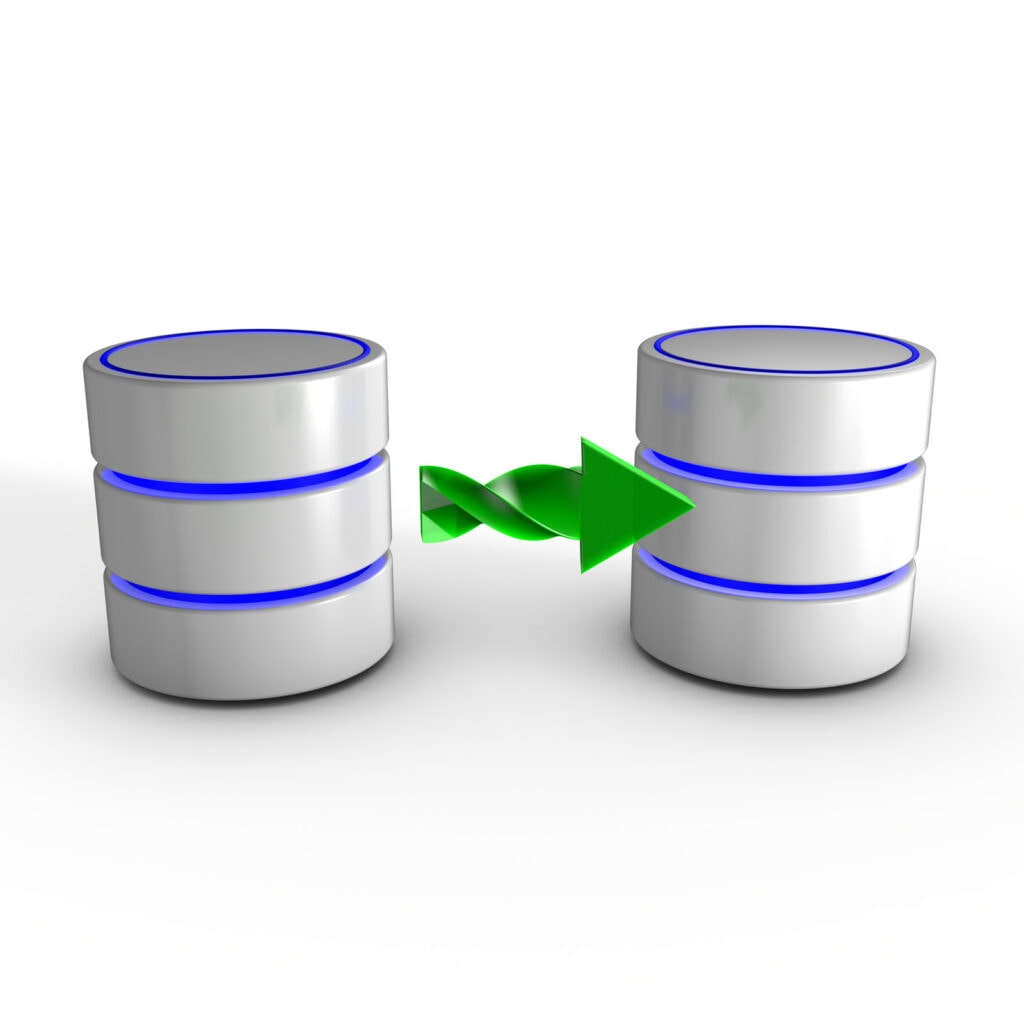
36.) Business Intelligence
Business intelligence aims to collect, process, and analyze data to help businesses make better decisions.
Business intelligence can improve marketing, sales, customer service, and operations.
It can also be used to identify new business opportunities and track competition.
BI is business and another tool in your company’s toolbox to continue dominating your area.
Data science is the perfect tool for business intelligence because it combines statistics, computer science, and machine learning.
Data scientists can use business intelligence to answer questions like, “What are our customers buying?” or “What are our competitors doing?” or “How can we increase sales?”
Business intelligence is a great way to improve your business’s bottom line and an excellent opportunity to dive deep into a well-respected research topic.
37.) Crowdsourcing
One of the newest areas of research in data science is crowdsourcing.
Crowdsourcing is a process of sourcing tasks or projects to a large group of people, typically via the internet.
This can be done for various purposes, such as gathering data, developing new algorithms, or even just for fun (think: online quizzes and surveys).
But what makes crowdsourcing so powerful is that it allows businesses and organizations to tap into a vast pool of talent and resources they wouldn’t otherwise have access to.
And with the rise of social media, it’s easier than ever to connect with potential crowdsource workers worldwide.
Imagine if you could effect that, finding innovative ways to improve how people work together.
That would have a huge effect.

Final Thoughts, Are These Research Topics In Data Science For You?
Thirty-seven different research topics in data science are a lot to take in, but we hope you found a research topic that interests you.
If not, don’t worry – there are plenty of other great topics to explore.
The important thing is to get started with your research and find ways to apply what you learn to real-world problems.
We wish you the best of luck as you begin your data science journey!
Other Data Science Articles
We love talking about data science; here are a couple of our favorite articles:
- Why Are You Interested In Data Science?
- Recent Posts
- Master Software Testing in 3 Months: Achievable Goal or Just a Dream? [Discover Now] - June 8, 2024
- How Entertainment Software Association makes money [Find Out Now!] - June 7, 2024
- Are Vietnamese Software Engineers Good at Tech? [Shocking Truth Revealed!] - June 7, 2024
99+ Data Science Research Topics: A Path to Innovation
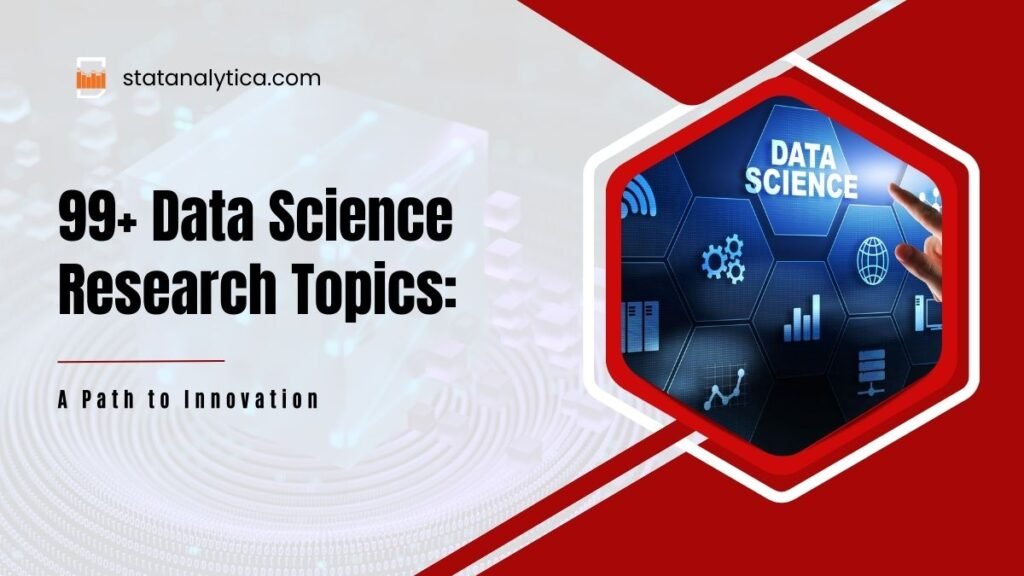
In today’s rapidly advancing digital age, data science research plays a pivotal role in driving innovation, solving complex problems, and shaping the future of technology. Choosing the right data science research topics is paramount to making a meaningful impact in this field.
In this blog, we will delve into the intricacies of selecting compelling data science research topics, explore a range of intriguing ideas, and discuss the methodologies to conduct meaningful research.
How to Choose Data Science Research Topics?
Table of Contents
Selecting the right research topic is the cornerstone of a successful data science endeavor. Several factors come into play when making this decision.
- First and foremost, personal interests and passion are essential. A genuine curiosity about a particular subject can fuel the dedication and enthusiasm needed for in-depth research.
- Current trends and challenges in data science provide valuable insights into areas that demand attention.
- Additionally, the availability of data and resources, as well as the potential impact and applications of the research, should be carefully considered.
99+ Data Science Research Topics Ideas: Category Wise
Supervised machine learning.
- Predictive modeling for disease outbreak prediction.
- Credit scoring using machine learning for financial institutions.
- Sentiment analysis for stock market predictions.
- Recommender systems for personalized content recommendations.
- Customer churn prediction in e-commerce.
- Speech recognition for voice assistants.
- Handwriting recognition for digitization of historical documents.
- Facial recognition for security and surveillance.
- Time series forecasting for energy consumption.
- Object detection in autonomous vehicles.
Unsupervised Machine Learning
- Market basket analysis for retail optimization.
- Topic modeling for content recommendation.
- Clustering techniques for social network analysis.
- Anomaly detection in manufacturing processes.
- Customer segmentation for marketing strategies.
- Event detection in social media data.
- Network traffic anomaly detection for cybersecurity.
- Anomaly detection in healthcare data.
- Fraud detection in insurance claims.
- Outlier detection in environmental monitoring.
Natural Language Processing (NLP)
- Abstractive text summarization for news articles.
- Multilingual sentiment analysis for global brands.
- Named entity recognition for information extraction.
- Speech-to-text transcription for accessibility.
- Hate speech detection in social media.
- Aspect-based sentiment analysis for product reviews.
- Text classification for content moderation.
- Language translation for low-resource languages.
- Chatbot development for customer support.
- Emotion detection in text and speech.
Deep Learning
- Image super-resolution using convolutional neural networks.
- Reinforcement learning for game playing and robotics.
- Generative adversarial networks (GANs) for image generation.
- Transfer learning for domain adaptation in deep models.
- Deep learning for medical image analysis.
- Video analysis for action recognition.
- Natural language understanding with transformer models.
- Speech synthesis using deep neural networks.
- AI-powered creative art generation.
- Deep reinforcement learning for autonomous vehicles.
Big Data Analytics
- Real-time data processing for IoT sensor networks.
- Social media data analysis for marketing insights.
- Data-driven decision-making in supply chain management.
- Customer journey analysis for e-commerce.
- Predictive maintenance using sensor data.
- Stream processing for financial market data.
- Energy consumption optimization in smart grids.
- Data analytics for climate change mitigation.
- Smart city infrastructure optimization.
- Data analytics for personalized healthcare recommendations.
Data Ethics and Privacy
- Fairness and bias mitigation in AI algorithms.
- Ethical considerations in AI for criminal justice.
- Privacy-preserving data sharing techniques.
- Algorithmic transparency and interpretability.
- Data anonymization for privacy protection.
- AI ethics in healthcare decision support.
- Ethical considerations in facial recognition technology.
- Governance frameworks for AI and data use.
- Data protection in the age of IoT.
- Ensuring AI accountability and responsibility.
Reinforcement Learning
- Autonomous drone navigation for package delivery.
- Deep reinforcement learning for game AI.
- Optimal resource allocation in cloud computing.
- Reinforcement learning for personalized education.
- Dynamic pricing strategies using reinforcement learning.
- Robot control and manipulation with RL.
- Multi-agent reinforcement learning for traffic management.
- Reinforcement learning in healthcare for treatment plans.
- Learning to optimize supply chain logistics.
- Reinforcement learning for inventory management.
Computer Vision
- Video-based human activity recognition.
- 3D object detection and tracking.
- Visual question answering for image understanding.
- Scene understanding for autonomous robots.
- Facial emotion recognition in real-time.
- Image deblurring and restoration.
- Visual SLAM for augmented reality applications.
- Image forensics and deepfake detection.
- Object counting and density estimation.
- Medical image segmentation and diagnosis.
Time Series Analysis
- Time series forecasting for renewable energy generation.
- Stock price prediction using LSTM models.
- Climate data analysis for weather forecasting.
- Anomaly detection in industrial sensor data.
- Predictive maintenance for machinery.
- Time series analysis of social media trends.
- Human behavior modeling with time series data.
- Forecasting economic indicators.
- Time series analysis of health data for disease prediction.
- Traffic flow prediction and optimization.
Graph Analytics
- Social network analysis for influence prediction.
- Recommender systems with graph-based models.
- Community detection in complex networks.
- Fraud detection in financial networks.
- Disease spread modeling in epidemiology.
- Knowledge graph construction and querying.
- Link prediction in citation networks.
- Graph-based sentiment analysis in social media.
- Urban planning with transportation network analysis.
- Ontology alignment and data integration in semantic web.
What Is The Right Research Methodology?
- Alignment with Objectives: Ensure that the chosen research approach aligns with the specific objectives of your study. This will help you answer the research questions effectively.
- Data Collection Methods: Carefully plan and execute data collection methods. Consider using surveys, interviews, data mining, or a combination of these based on the nature of your research and the data availability.
- Data Analysis Techniques: Select appropriate data analysis techniques that suit the research questions. This may involve using statistical analysis for quantitative data, machine learning algorithms for predictive modeling, or deep learning models for complex pattern recognition, depending on the research context.
- Ethical Considerations: Prioritize ethical considerations in data science research. This includes obtaining informed consent from study participants and ensuring data anonymization to protect privacy. Ethical guidelines should be followed throughout the research process.
Choosing the right research methodology involves a thoughtful and purposeful selection of methods and techniques that best serve the objectives of your data science research.
How to Conduct Data Science Research?
Conducting data science research involves a systematic and structured approach to generate insights or develop solutions using data. Here are the key steps to conduct data science research:
- Define Research Objectives
Clearly define the goals and objectives of your research. What specific questions do you want to answer or problems do you want to solve?
- Literature Review
Conduct a thorough literature review to understand the current state of research in your chosen area. Identify gaps, challenges, and potential research opportunities.
- Data Collection
Gather the relevant data for your research. This may involve data from sources like databases, surveys, APIs, or even creating your datasets.
- Data Preprocessing
Clean and preprocess the data to ensure it is in a usable format. This includes handling missing values, outliers, and data transformations.
- Exploratory Data Analysis (EDA)
Perform EDA to gain a deeper understanding of the data. Visualizations, summary statistics, and data profiling can help identify patterns and insights.
- Hypothesis Formulation (if applicable)
If your research involves hypothesis testing, formulate clear hypotheses based on your data and objectives.
- Model Development
Choose the appropriate modeling techniques (e.g., machine learning, statistical models) based on your research objectives. Develop and train models as needed.
- Evaluation and Validation
Assess the performance and validity of your models or analytical methods. Use appropriate metrics to measure how well they achieve the research goals.
- Interpret Results
Analyze the results and interpret what they mean in the context of your research objectives. Visualizations and clear explanations are important.
- Iterate and Refine
If necessary, iterate on your data collection, preprocessing, and modeling steps to improve results. This process may involve adjusting parameters or trying different algorithms.
- Ethical Considerations
Ensure that your research complies with ethical guidelines, particularly concerning data privacy and informed consent.
- Documentation
Maintain comprehensive documentation of your research process, including data sources, methodologies, and results. This helps in reproducibility and transparency.
- Communication
Communicate your findings through reports, presentations, or academic papers. Clearly convey the significance of your research and its implications.
- Peer Review and Feedback
If applicable, seek peer review and feedback from experts in the field to validate your research and gain valuable insights.
- Publication and Sharing
Consider publishing your research in reputable journals or sharing it with the broader community through conferences, online platforms, or industry events.
- Continuous Learning
Stay updated with the latest developments in data science and related fields to refine your research skills and methodologies.
Conducting data science research is a dynamic and iterative process, and each step is essential for generating meaningful insights and contributing to the field. It’s important to approach your research with a critical and systematic mindset, ensuring that your work is rigorous and well-documented.
Challenges and Pitfalls of Data Science Research
Data science research, while promising and impactful, comes with its set of challenges. Common obstacles include data quality issues, lack of domain expertise, algorithmic biases, and ethical dilemmas.
Researchers must be aware of these challenges and devise strategies to overcome them. Collaboration with domain experts, thorough validation of algorithms, and adherence to ethical guidelines are some of the approaches to mitigate potential pitfalls.
Impact and Application
The impact of data science research topics extends far beyond the confines of laboratories and academic institutions. Research outcomes often find applications in real-world scenarios, revolutionizing industries and enhancing the quality of life.
Predictive models in healthcare improve patient care and treatment outcomes. Advanced fraud detection systems safeguard financial transactions. Natural language processing technologies power virtual assistants and language translation services, fostering global communication.
Real-time data processing in IoT applications drives smart cities and connected ecosystems. Ethical considerations and privacy-preserving techniques ensure responsible and respectful use of personal data, building trust between technology and society.
Embarking on a journey in data science research topics is an exciting and rewarding endeavor. By choosing the right research topics, conducting rigorous studies, and addressing challenges ethically and responsibly, researchers can contribute significantly to the ever-evolving field of data science.
As we explore the depths of machine learning, natural language processing, big data analytics, and ethical considerations, we pave the way for innovation, shape the future of technology, and make a positive impact on the world.
Related Posts
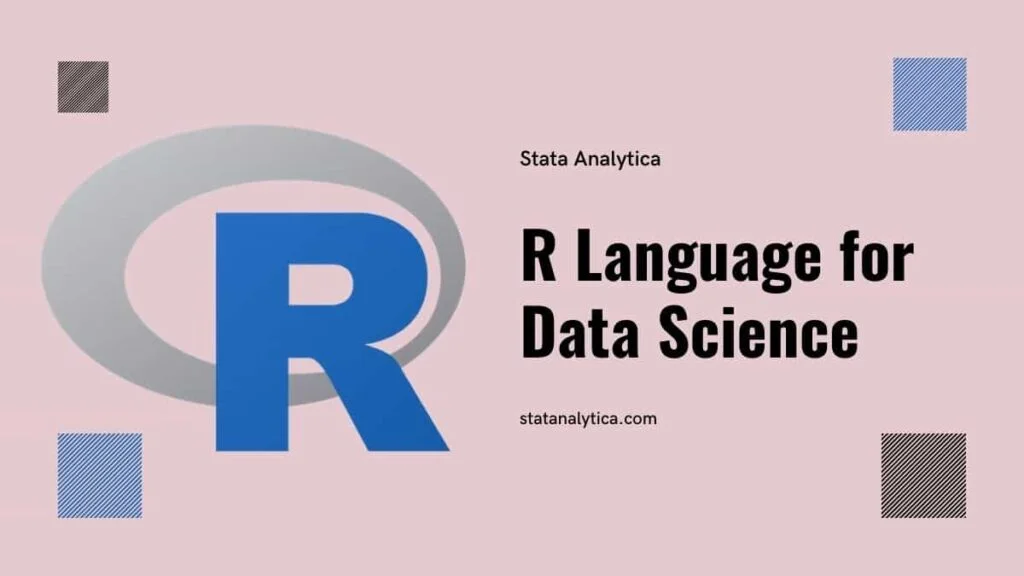
Top Reasons For Why Should You Use R for Data Science
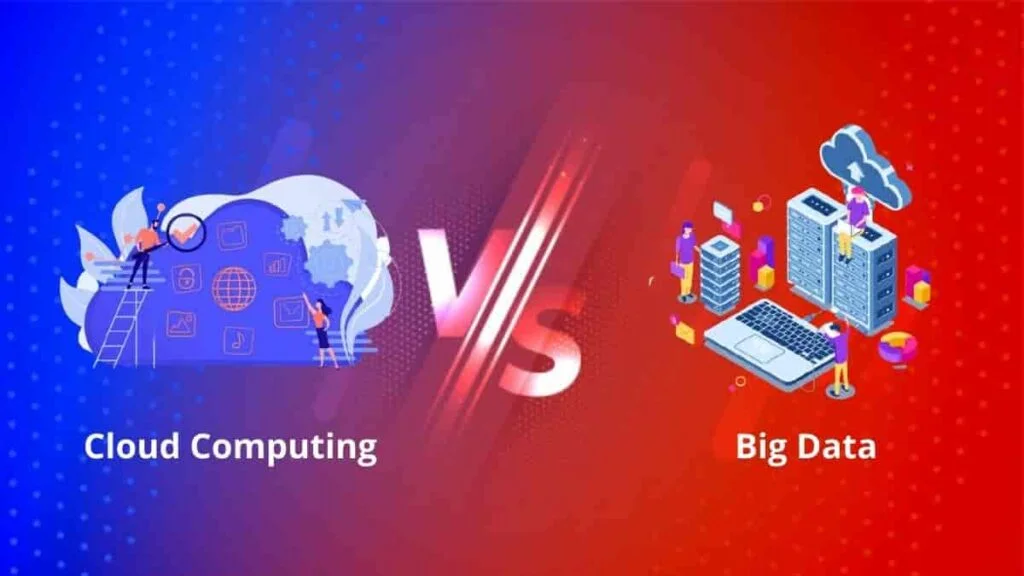
In Depth Difference Between Big Data And Cloud Computing
- How It Works
- PhD thesis writing
- Master thesis writing
- Bachelor thesis writing
- Dissertation writing service
- Dissertation abstract writing
- Thesis proposal writing
- Thesis editing service
- Thesis proofreading service
- Thesis formatting service
- Coursework writing service
- Research paper writing service
- Architecture thesis writing
- Computer science thesis writing
- Engineering thesis writing
- History thesis writing
- MBA thesis writing
- Nursing dissertation writing
- Psychology dissertation writing
- Sociology thesis writing
- Statistics dissertation writing
- Buy dissertation online
- Write my dissertation
- Cheap thesis
- Cheap dissertation
- Custom dissertation
- Dissertation help
- Pay for thesis
- Pay for dissertation
- Senior thesis
- Write my thesis
214 Best Big Data Research Topics for Your Thesis Paper
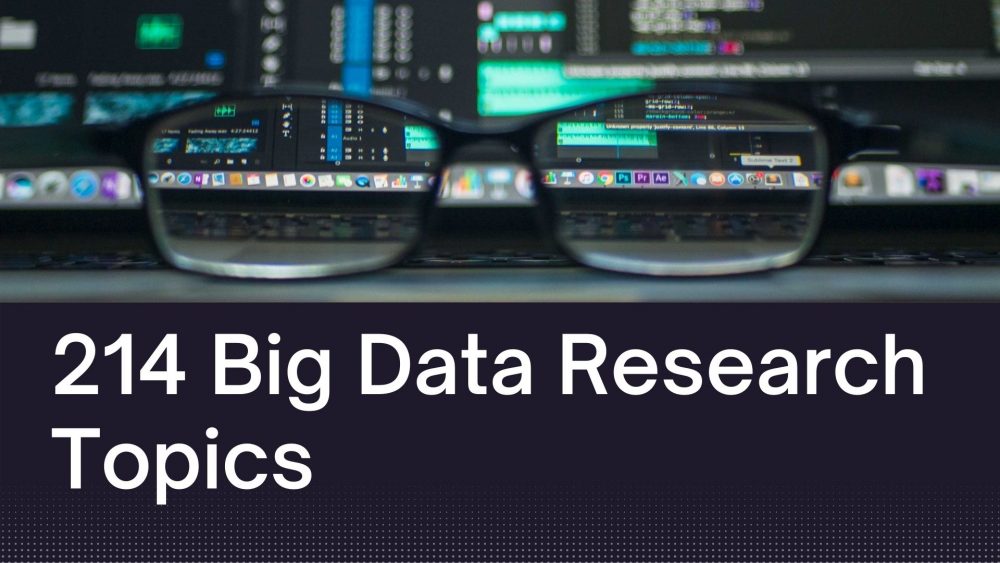
Finding an ideal big data research topic can take you a long time. Big data, IoT, and robotics have evolved. The future generations will be immersed in major technologies that will make work easier. Work that was done by 10 people will now be done by one person or a machine. This is amazing because, in as much as there will be job loss, more jobs will be created. It is a win-win for everyone.
Big data is a major topic that is being embraced globally. Data science and analytics are helping institutions, governments, and the private sector. We will share with you the best big data research topics.
On top of that, we can offer you the best writing tips to ensure you prosper well in your academics. As students in the university, you need to do proper research to get top grades. Hence, you can consult us if in need of research paper writing services.
Big Data Analytics Research Topics for your Research Project
Are you looking for an ideal big data analytics research topic? Once you choose a topic, consult your professor to evaluate whether it is a great topic. This will help you to get good grades.
- Which are the best tools and software for big data processing?
- Evaluate the security issues that face big data.
- An analysis of large-scale data for social networks globally.
- The influence of big data storage systems.
- The best platforms for big data computing.
- The relation between business intelligence and big data analytics.
- The importance of semantics and visualization of big data.
- Analysis of big data technologies for businesses.
- The common methods used for machine learning in big data.
- The difference between self-turning and symmetrical spectral clustering.
- The importance of information-based clustering.
- Evaluate the hierarchical clustering and density-based clustering application.
- How is data mining used to analyze transaction data?
- The major importance of dependency modeling.
- The influence of probabilistic classification in data mining.
Interesting Big Data Analytics Topics
Who said big data had to be boring? Here are some interesting big data analytics topics that you can try. They are based on how some phenomena are done to make the world a better place.
- Discuss the privacy issues in big data.
- Evaluate the storage systems of scalable in big data.
- The best big data processing software and tools.
- Data mining tools and techniques are popularly used.
- Evaluate the scalable architectures for parallel data processing.
- The major natural language processing methods.
- Which are the best big data tools and deployment platforms?
- The best algorithms for data visualization.
- Analyze the anomaly detection in cloud servers
- The scrutiny normally done for the recruitment of big data job profiles.
- The malicious user detection in big data collection.
- Learning long-term dependencies via the Fourier recurrent units.
- Nomadic computing for big data analytics.
- The elementary estimators for graphical models.
- The memory-efficient kernel approximation.
Big Data Latest Research Topics
Do you know the latest research topics at the moment? These 15 topics will help you to dive into interesting research. You may even build on research done by other scholars.
- Evaluate the data mining process.
- The influence of the various dimension reduction methods and techniques.
- The best data classification methods.
- The simple linear regression modeling methods.
- Evaluate the logistic regression modeling.
- What are the commonly used theorems?
- The influence of cluster analysis methods in big data.
- The importance of smoothing methods analysis in big data.
- How is fraud detection done through AI?
- Analyze the use of GIS and spatial data.
- How important is artificial intelligence in the modern world?
- What is agile data science?
- Analyze the behavioral analytics process.
- Semantic analytics distribution.
- How is domain knowledge important in data analysis?
Big Data Debate Topics
If you want to prosper in the field of big data, you need to try even hard topics. These big data debate topics are interesting and will help you to get a better understanding.
- The difference between big data analytics and traditional data analytics methods.
- Why do you think the organization should think beyond the Hadoop hype?
- Does the size of the data matter more than how recent the data is?
- Is it true that bigger data are not always better?
- The debate of privacy and personalization in maintaining ethics in big data.
- The relation between data science and privacy.
- Do you think data science is a rebranding of statistics?
- Who delivers better results between data scientists and domain experts?
- According to your view, is data science dead?
- Do you think analytics teams need to be centralized or decentralized?
- The best methods to resource an analytics team.
- The best business case for investing in analytics.
- The societal implications of the use of predictive analytics within Education.
- Is there a need for greater control to prevent experimentation on social media users without their consent?
- How is the government using big data; for the improvement of public statistics or to control the population?
University Dissertation Topics on Big Data
Are you doing your Masters or Ph.D. and wondering the best dissertation topic or thesis to do? Why not try any of these? They are interesting and based on various phenomena. While doing the research ensure you relate the phenomenon with the current modern society.
- The machine learning algorithms are used for fall recognition.
- The divergence and convergence of the internet of things.
- The reliable data movements using bandwidth provision strategies.
- How is big data analytics using artificial neural networks in cloud gaming?
- How is Twitter accounts classification done using network-based features?
- How is online anomaly detection done in the cloud collaborative environment?
- Evaluate the public transportation insights provided by big data.
- Evaluate the paradigm for cancer patients using the nursing EHR to predict the outcome.
- Discuss the current data lossless compression in the smart grid.
- How does online advertising traffic prediction helps in boosting businesses?
- How is the hyperspectral classification done using the multiple kernel learning paradigm?
- The analysis of large data sets downloaded from websites.
- How does social media data help advertising companies globally?
- Which are the systems recognizing and enforcing ownership of data records?
- The alternate possibilities emerging for edge computing.
The Best Big Data Analysis Research Topics and Essays
There are a lot of issues that are associated with big data. Here are some of the research topics that you can use in your essays. These topics are ideal whether in high school or college.
- The various errors and uncertainty in making data decisions.
- The application of big data on tourism.
- The automation innovation with big data or related technology
- The business models of big data ecosystems.
- Privacy awareness in the era of big data and machine learning.
- The data privacy for big automotive data.
- How is traffic managed in defined data center networks?
- Big data analytics for fault detection.
- The need for machine learning with big data.
- The innovative big data processing used in health care institutions.
- The money normalization and extraction from texts.
- How is text categorization done in AI?
- The opportunistic development of data-driven interactive applications.
- The use of data science and big data towards personalized medicine.
- The programming and optimization of big data applications.
The Latest Big Data Research Topics for your Research Proposal
Doing a research proposal can be hard at first unless you choose an ideal topic. If you are just diving into the big data field, you can use any of these topics to get a deeper understanding.
- The data-centric network of things.
- Big data management using artificial intelligence supply chain.
- The big data analytics for maintenance.
- The high confidence network predictions for big biological data.
- The performance optimization techniques and tools for data-intensive computation platforms.
- The predictive modeling in the legal context.
- Analysis of large data sets in life sciences.
- How to understand the mobility and transport modal disparities sing emerging data sources?
- How do you think data analytics can support asset management decisions?
- An analysis of travel patterns for cellular network data.
- The data-driven strategic planning for citywide building retrofitting.
- How is money normalization done in data analytics?
- Major techniques used in data mining.
- The big data adaptation and analytics of cloud computing.
- The predictive data maintenance for fault diagnosis.
Interesting Research Topics on A/B Testing In Big Data
A/B testing topics are different from the normal big data topics. However, you use an almost similar methodology to find the reasons behind the issues. These topics are interesting and will help you to get a deeper understanding.
- How is ultra-targeted marketing done?
- The transition of A/B testing from digital to offline.
- How can big data and A/B testing be done to win an election?
- Evaluate the use of A/B testing on big data
- Evaluate A/B testing as a randomized control experiment.
- How does A/B testing work?
- The mistakes to avoid while conducting the A/B testing.
- The most ideal time to use A/B testing.
- The best way to interpret results for an A/B test.
- The major principles of A/B tests.
- Evaluate the cluster randomization in big data
- The best way to analyze A/B test results and the statistical significance.
- How is A/B testing used in boosting businesses?
- The importance of data analysis in conversion research
- The importance of A/B testing in data science.
Amazing Research Topics on Big Data and Local Governments
Governments are now using big data to make the lives of the citizens better. This is in the government and the various institutions. They are based on real-life experiences and making the world better.
- Assess the benefits and barriers of big data in the public sector.
- The best approach to smart city data ecosystems.
- The big analytics used for policymaking.
- Evaluate the smart technology and emergence algorithm bureaucracy.
- Evaluate the use of citizen scoring in public services.
- An analysis of the government administrative data globally.
- The public values are found in the era of big data.
- Public engagement on local government data use.
- Data analytics use in policymaking.
- How are algorithms used in public sector decision-making?
- The democratic governance in the big data era.
- The best business model innovation to be used in sustainable organizations.
- How does the government use the collected data from various sources?
- The role of big data for smart cities.
- How does big data play a role in policymaking?
Easy Research Topics on Big Data
Who said big data topics had to be hard? Here are some of the easiest research topics. They are based on data management, research, and data retention. Pick one and try it!
- Who uses big data analytics?
- Evaluate structure machine learning.
- Explain the whole deep learning process.
- Which are the best ways to manage platforms for enterprise analytics?
- Which are the new technologies used in data management?
- What is the importance of data retention?
- The best way to work with images is when doing research.
- The best way to promote research outreach is through data management.
- The best way to source and manage external data.
- Does machine learning improve the quality of data?
- Describe the security technologies that can be used in data protection.
- Evaluate token-based authentication and its importance.
- How can poor data security lead to the loss of information?
- How to determine secure data.
- What is the importance of centralized key management?
Unique IoT and Big Data Research Topics
Internet of Things has evolved and many devices are now using it. There are smart devices, smart cities, smart locks, and much more. Things can now be controlled by the touch of a button.
- Evaluate the 5G networks and IoT.
- Analyze the use of Artificial intelligence in the modern world.
- How do ultra-power IoT technologies work?
- Evaluate the adaptive systems and models at runtime.
- How have smart cities and smart environments improved the living space?
- The importance of the IoT-based supply chains.
- How does smart agriculture influence water management?
- The internet applications naming and identifiers.
- How does the smart grid influence energy management?
- Which are the best design principles for IoT application development?
- The best human-device interactions for the Internet of Things.
- The relation between urban dynamics and crowdsourcing services.
- The best wireless sensor network for IoT security.
- The best intrusion detection in IoT.
- The importance of big data on the Internet of Things.
Big Data Database Research Topics You Should Try
Big data is broad and interesting. These big data database research topics will put you in a better place in your research. You also get to evaluate the roles of various phenomena.
- The best cloud computing platforms for big data analytics.
- The parallel programming techniques for big data processing.
- The importance of big data models and algorithms in research.
- Evaluate the role of big data analytics for smart healthcare.
- How is big data analytics used in business intelligence?
- The best machine learning methods for big data.
- Evaluate the Hadoop programming in big data analytics.
- What is privacy-preserving to big data analytics?
- The best tools for massive big data processing
- IoT deployment in Governments and Internet service providers.
- How will IoT be used for future internet architectures?
- How does big data close the gap between research and implementation?
- What are the cross-layer attacks in IoT?
- The influence of big data and smart city planning in society.
- Why do you think user access control is important?
Big Data Scala Research Topics
Scala is a programming language that is used in data management. It is closely related to other data programming languages. Here are some of the best scala questions that you can research.
- Which are the most used languages in big data?
- How is scala used in big data research?
- Is scala better than Java in big data?
- How is scala a concise programming language?
- How does the scala language stream process in real-time?
- Which are the various libraries for data science and data analysis?
- How does scala allow imperative programming in data collection?
- Evaluate how scala includes a useful REPL for interaction.
- Evaluate scala’s IDE support.
- The data catalog reference model.
- Evaluate the basics of data management and its influence on research.
- Discuss the behavioral analytics process.
- What can you term as the experience economy?
- The difference between agile data science and scala language.
- Explain the graph analytics process.
Independent Research Topics for Big Data
These independent research topics for big data are based on the various technologies and how they are related. Big data will greatly be important for modern society.
- The biggest investment is in big data analysis.
- How are multi-cloud and hybrid settings deep roots?
- Why do you think machine learning will be in focus for a long while?
- Discuss in-memory computing.
- What is the difference between edge computing and in-memory computing?
- The relation between the Internet of things and big data.
- How will digital transformation make the world a better place?
- How does data analysis help in social network optimization?
- How will complex big data be essential for future enterprises?
- Compare the various big data frameworks.
- The best way to gather and monitor traffic information using the CCTV images
- Evaluate the hierarchical structure of groups and clusters in the decision tree.
- Which are the 3D mapping techniques for live streaming data.
- How does machine learning help to improve data analysis?
- Evaluate DataStream management in task allocation.
- How is big data provisioned through edge computing?
- The model-based clustering of texts.
- The best ways to manage big data.
- The use of machine learning in big data.
Is Your Big Data Thesis Giving You Problems?
These are some of the best topics that you can use to prosper in your studies. Not only are they easy to research but also reflect on real-time issues. Whether in University or college, you need to put enough effort into your studies to prosper. However, if you have time constraints, we can provide professional writing help. Are you looking for online expert writers? Look no further, we will provide quality work at a cheap price.

Leave a Reply Cancel reply
Your email address will not be published. Required fields are marked *
Comment * Error message
Name * Error message
Email * Error message
Save my name, email, and website in this browser for the next time I comment.
As Putin continues killing civilians, bombing kindergartens, and threatening WWIII, Ukraine fights for the world's peaceful future.
Ukraine Live Updates
Database Search
What is Database Search?
Harvard Library licenses hundreds of online databases, giving you access to academic and news articles, books, journals, primary sources, streaming media, and much more.
The contents of these databases are only partially included in HOLLIS. To make sure you're really seeing everything, you need to search in multiple places. Use Database Search to identify and connect to the best databases for your topic.
In addition to digital content, you will find specialized search engines used in specific scholarly domains.
Related Services & Tools
Thank you for visiting nature.com. You are using a browser version with limited support for CSS. To obtain the best experience, we recommend you use a more up to date browser (or turn off compatibility mode in Internet Explorer). In the meantime, to ensure continued support, we are displaying the site without styles and JavaScript.
- View all journals
Databases articles from across Nature Portfolio
A database is one or more sets of data, for example numbers, characters and images, bundled together with software that enables data to be added, removed or retrieved. Databases can be used to store research data, for example in protein databases and genetic databases, and they organise data into standard formats so that information can readily be obtained.
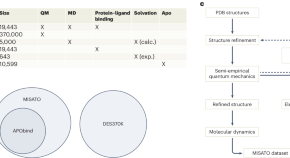
A multidimensional dataset for structure-based machine learning
MISATO, a dataset for structure-based drug discovery combines quantum mechanics property data and molecular dynamics simulations on ~20,000 protein–ligand structures, substantially extends the amount of data available to the community and holds potential for advancing work in drug discovery.
- Matthew Holcomb
- Stefano Forli
Related Subjects
- Genetic databases
- Protein databases
Latest Research and Reviews
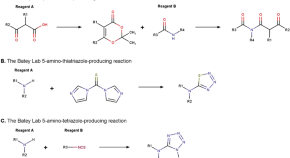
The Pan-Canadian Chemical Library: A Mechanism to Open Academic Chemistry to High-Throughput Virtual Screening
- Corentin Bedart
- Grace Shimokura
- Matthieu Schapira
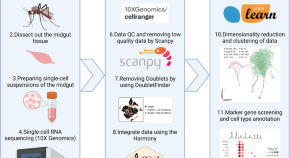
A cell atlas of the adult female Aedes aegypti midgut revealed by single-cell RNA sequencing
- Shunlong Wang
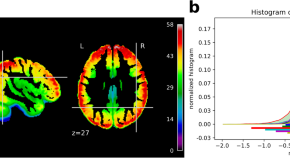
Individual Brain Charting dataset extension, third release for movie watching and retinotopy data
- Ana Luísa Pinho
- Hugo Richard
- Bertrand Thirion
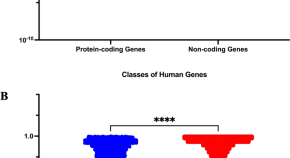
Housekeeping protein-coding genes interrogated with tissue and individual variations
- Kuo-Feng Tung
- Chao-Yu Pan
- Wen-chang Lin
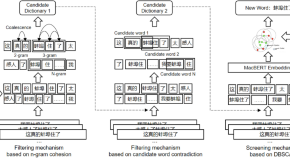
Research on domain ontology construction based on the content features of online rumors
- Jianbo Zhao
- Huailiang Liu
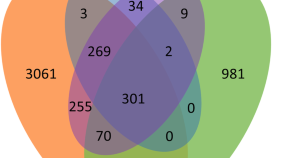
DCTPep, the data of cancer therapy peptides
- Yanchao Liu
News and Comment
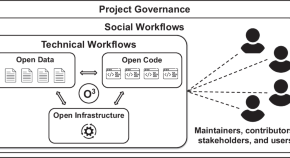
The O3 guidelines: open data, open code, and open infrastructure for sustainable curated scientific resources
Curated resources that support scientific research often go out of date or become inaccessible. This can happen for several reasons including lack of continuing funding, the departure of key personnel, or changes in institutional priorities. We introduce the Open Data, Open Code, Open Infrastructure (O3) Guidelines as an actionable road map to creating and maintaining resources that are less susceptible to such external factors and can continue to be used and maintained by the community that they serve.
- Charles Tapley Hoyt
- Benjamin M. Gyori

The AI revolution is coming to robots: how will it change them?
The melding of artificial intelligence and robotics could catapult both fields to new heights.
- Elizabeth Gibney
Standardized metadata for biological samples could unlock the potential of collections
- Vojtěch Brlík
Big data for everyone
- Henrietta Howells
How To Choose A Research Topic
Step-By-Step Tutorial With Examples + Free Topic Evaluator
By: Derek Jansen (MBA) | Expert Reviewer: Dr Eunice Rautenbach | April 2024
Choosing the right research topic is likely the most important decision you’ll make on your dissertation or thesis journey. To make the right choice, you need to take a systematic approach and evaluate each of your candidate ideas across a consistent set of criteria. In this tutorial, we’ll unpack five essential criteria that will help you evaluate your prospective research ideas and choose a winner.
Overview: The “Big 5” Key Criteria
- Topic originality or novelty
- Value and significance
- Access to data and equipment
- Time limitations and implications
- Ethical requirements and constraints
Criterion #1: Originality & Novelty
As we’ve discussed extensively on this blog, originality in a research topic is essential. In other words, you need a clear research gap . The uniqueness of your topic determines its contribution to the field and its potential to stand out in the academic community. So, for each of your prospective topics, ask yourself the following questions:
- What research gap and research problem am I filling?
- Does my topic offer new insights?
- Am I combining existing ideas in a unique way?
- Am I taking a unique methodological approach?
To objectively evaluate the originality of each of your topic candidates, rate them on these aspects. This process will not only help in choosing a topic that stands out, but also one that can capture the interest of your audience and possibly contribute significantly to the field of study – which brings us to our next criterion.

Criterion #2: Value & Significance
Next, you’ll need to assess the value and significance of each prospective topic. To do this, you’ll need to ask some hard questions.
- Why is it important to explore these research questions?
- Who stands to benefit from this study?
- How will they benefit, specifically?
By clearly understanding and outlining the significance of each potential topic, you’ll not only be justifying your final choice – you’ll essentially be laying the groundwork for a persuasive research proposal , which is equally important.
Criterion #3: Access to Data & Equipment
Naturally, access to relevant data and equipment is crucial for the success of your research project. So, for each of your prospective topic ideas, you’ll need to evaluate whether you have the necessary resources to collect data and conduct your study.
Here are some questions to ask for each potential topic:
- Will I be able to access the sample of interest (e.g., people, animals, etc.)?
- Do I have (or can I get) access to the required equipment, at the time that I need it?
- Are there costs associated with any of this? If so, what are they?
Keep in mind that getting access to certain types of data may also require special permissions and legalities, especially if your topic involves vulnerable groups (patients, youths, etc.). You may also need to adhere to specific data protection laws, depending on the country. So, be sure to evaluate these aspects thoroughly for each topic. Overlooking any of these can lead to significant complications down the line.


Criterion #4: Time Requirements & Implications
Naturally, having a realistic timeline for each potential research idea is crucial. So, consider the scope of each potential topic and estimate how long each phase of the research will take — from literature review to data collection and analysis, to writing and revisions. Underestimating the time needed for a research project is extremely common , so it’s important to include buffer time for unforeseen delays.
Remember, efficient time management is not just about the duration but also about the timing . For example, if your research involves fieldwork, there may specific times of the year when this is most doable (or not doable at all). So, be sure to consider both time and timing for each of your prospective topics.
Criterion #5: Ethical Compliance
Failing to adhere to your university’s research ethics policy is a surefire way to get your proposal rejected . So, you’ll need to evaluate each topic for potential ethical issues, especially if your research involves human subjects, sensitive data, or has any potential environmental impact.
Remember that ethical compliance is not just a formality – it’s a responsibility to ensure the integrity and social responsibility of your research. Topics that pose significant ethical challenges are typically the first to be rejected, so you need to take this seriously. It’s also useful to keep in mind that some topics are more “ethically sensitive” than others , which usually means that they’ll require multiple levels of approval. Ideally, you want to avoid this additional admin, so mark down any prospective topics that fall into an ethical “grey zone”.
If you’re unsure about the details of your university’s ethics policy, ask for a copy or speak directly to your course coordinator. Don’t make any assumptions when it comes to research ethics!
Key Takeaways
In this post, we’ve explored how to choose a research topic using a systematic approach. To recap, the “Big 5” assessment criteria include:
- Topic originality and novelty
- Time requirements
- Ethical compliance
Be sure to grab a copy of our free research topic evaluator sheet here to fast-track your topic selection process. If you need hands-on help finding and refining a high-quality research topic for your dissertation or thesis, you can also check out our private coaching service .
Need a helping hand?
You Might Also Like:

Submit a Comment Cancel reply
Your email address will not be published. Required fields are marked *
Save my name, email, and website in this browser for the next time I comment.
- Print Friendly
- How to Choose a Research Topic
- East Tennessee State University
- Top Databases for Topics
Top Databases
Gale Virtual Reference Library's Topic Finder and Gale's Opposing Viewpoints in Context databases are helpful resources. They can help you choose, narrow down, and get information on your topic through the Topic Finder and Overview functions.
From the landing page you can go to Topic Finder to search topics you're interested in related to your assignment.

Once you're in the Topic Finder, type in your term and it will make suggestions for how you can narrow it down or expand as needed.

Opposing Viewpoints in Context provides users overview information on current issues and in-depth articles, videos, news, and other resources.

- << Previous: How to Choose a Research Topic
Contact a Librarian

- Last Updated: Oct 5, 2023 9:24 AM
- URL: https://libraries.etsu.edu/guides/howto/lib101topics
Research Topics
Prof. Dr. Michael Grossniklaus
- Barbara Lüthke
- Researchers
- Current Project Funding
- Former Project Funding
- Publications
- Publication List
- Minibase for Java
- Student Corner
- Projects and Theses
- Internships
The steadily increasing informatization of society and economy produces data at a rate that has never been seen before. The volume and variety of available digital information continuously inspires new possibilities how insights can be gained by analyzing this data.
In order to realize this potential, numerous research efforts are already underway, which are typically summarized under the umbrella of data science. Data science is a field that crosscuts many research area of computer science, such as artificial intelligence, machine learning, data mining, databases, and information systems.
Our research falls into the last two of these areas and aims at supporting data science at the system level. Data science requires the management of new types of data as well as new complex ways to process it. Our research method is to address these requirements by innovating new and general solutions that leverage and extend core database and information systems technologies.
Within this broad area, our research focuses on challenges linked to data processing, in both traditional database and data stream management systems.
Graph Databases
We are currently investigating which data management technologies can be applied to what type of graph data application.
Network Data Analytics
We are interest in the analysis of large network datasets and in the detection of traits that are present among different types of networks.
Query Optimization
Phone: +49 7531 88 4434 Fax: +49 7531 88 3577
Room: PZ 806
Prof. Dr. Marc H. Scholl
Phone: +49 7531 88 4432 Fax: +49 7531 88 3577
Room: PZ 811
Search University of Konstanz
Suggestions.
Reference management. Clean and simple.
The top list of academic research databases
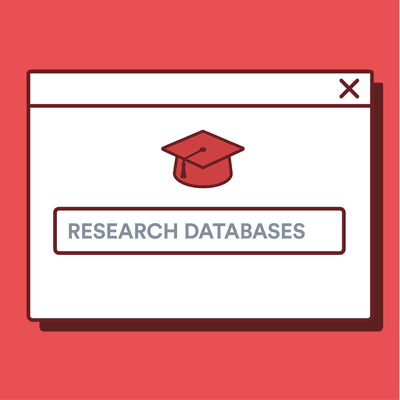
2. Web of Science
5. ieee xplore, 6. sciencedirect, 7. directory of open access journals (doaj), get the most out of your academic research database, frequently asked questions about academic research databases, related articles.
Whether you are writing a thesis , dissertation, or research paper it is a key task to survey prior literature and research findings. More likely than not, you will be looking for trusted resources, most likely peer-reviewed research articles.
Academic research databases make it easy to locate the literature you are looking for. We have compiled the top list of trusted academic resources to help you get started with your research:
Scopus is one of the two big commercial, bibliographic databases that cover scholarly literature from almost any discipline. Besides searching for research articles, Scopus also provides academic journal rankings, author profiles, and an h-index calculator .
- Coverage: 90.6 million core records
- References: N/A
- Discipline: Multidisciplinary
- Access options: Limited free preview, full access by institutional subscription only
- Provider: Elsevier

Web of Science also known as Web of Knowledge is the second big bibliographic database. Usually, academic institutions provide either access to Web of Science or Scopus on their campus network for free.
- Coverage: approx. 100 million items
- References: 1.4 billion
- Access options: institutional subscription only
- Provider: Clarivate (formerly Thomson Reuters)
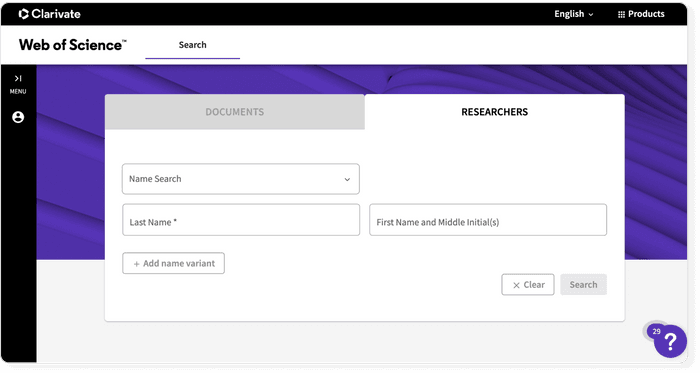
PubMed is the number one resource for anyone looking for literature in medicine or biological sciences. PubMed stores abstracts and bibliographic details of more than 30 million papers and provides full text links to the publisher sites or links to the free PDF on PubMed Central (PMC) .
- Coverage: approx. 35 million items
- Discipline: Medicine and Biological Sciences
- Access options: free
- Provider: NIH
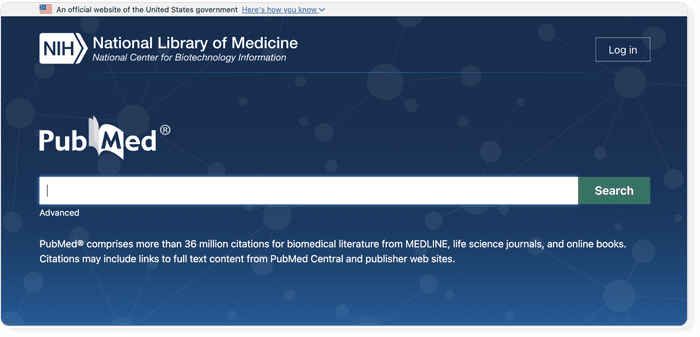
For education sciences, ERIC is the number one destination. ERIC stands for Education Resources Information Center, and is a database that specifically hosts education-related literature.
- Coverage: approx. 1.6 million items
- Discipline: Education
- Provider: U.S. Department of Education

IEEE Xplore is the leading academic database in the field of engineering and computer science. It's not only journal articles, but also conference papers, standards and books that can be search for.
- Coverage: approx. 6 million items
- Discipline: Engineering
- Provider: IEEE (Institute of Electrical and Electronics Engineers)
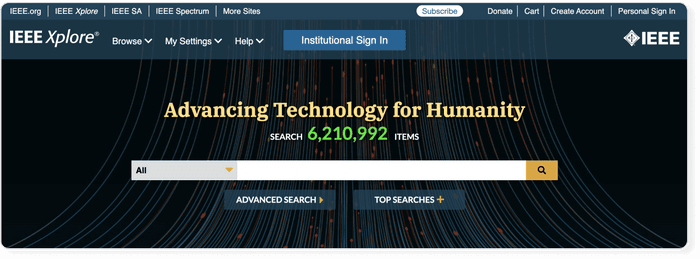
ScienceDirect is the gateway to the millions of academic articles published by Elsevier, 1.4 million of which are open access. Journals and books can be searched via a single interface.
- Coverage: approx. 19.5 million items
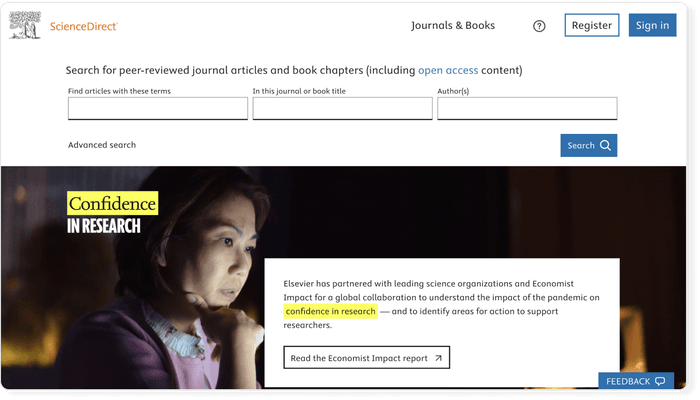
The DOAJ is an open-access academic database that can be accessed and searched for free.
- Coverage: over 8 million records
- Provider: DOAJ

JSTOR is another great resource to find research papers. Any article published before 1924 in the United States is available for free and JSTOR also offers scholarships for independent researchers.
- Coverage: more than 12 million items
- Provider: ITHAKA

Start using a reference manager like Paperpile to save, organize, and cite your references. Paperpile integrates with PubMed and many popular databases, so you can save references and PDFs directly to your library using the Paperpile buttons:
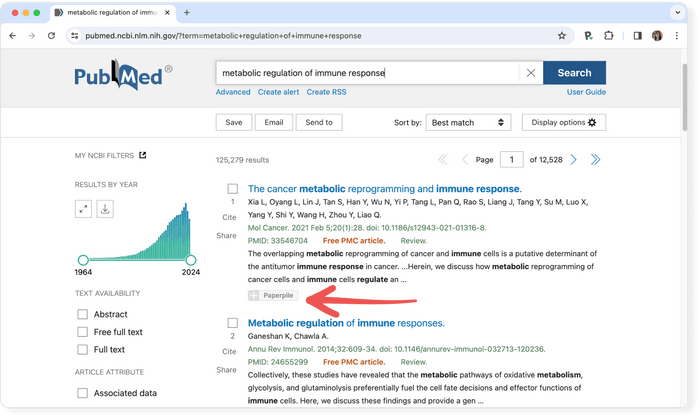
Scopus is one of the two big commercial, bibliographic databases that cover scholarly literature from almost any discipline. Beside searching for research articles, Scopus also provides academic journal rankings, author profiles, and an h-index calculator .
PubMed is the number one resource for anyone looking for literature in medicine or biological sciences. PubMed stores abstracts and bibliographic details of more than 30 million papers and provides full text links to the publisher sites or links to the free PDF on PubMed Central (PMC)


Choose Your Test
Sat / act prep online guides and tips, 113 great research paper topics.
General Education

One of the hardest parts of writing a research paper can be just finding a good topic to write about. Fortunately we've done the hard work for you and have compiled a list of 113 interesting research paper topics. They've been organized into ten categories and cover a wide range of subjects so you can easily find the best topic for you.
In addition to the list of good research topics, we've included advice on what makes a good research paper topic and how you can use your topic to start writing a great paper.
What Makes a Good Research Paper Topic?
Not all research paper topics are created equal, and you want to make sure you choose a great topic before you start writing. Below are the three most important factors to consider to make sure you choose the best research paper topics.
#1: It's Something You're Interested In
A paper is always easier to write if you're interested in the topic, and you'll be more motivated to do in-depth research and write a paper that really covers the entire subject. Even if a certain research paper topic is getting a lot of buzz right now or other people seem interested in writing about it, don't feel tempted to make it your topic unless you genuinely have some sort of interest in it as well.
#2: There's Enough Information to Write a Paper
Even if you come up with the absolute best research paper topic and you're so excited to write about it, you won't be able to produce a good paper if there isn't enough research about the topic. This can happen for very specific or specialized topics, as well as topics that are too new to have enough research done on them at the moment. Easy research paper topics will always be topics with enough information to write a full-length paper.
Trying to write a research paper on a topic that doesn't have much research on it is incredibly hard, so before you decide on a topic, do a bit of preliminary searching and make sure you'll have all the information you need to write your paper.
#3: It Fits Your Teacher's Guidelines
Don't get so carried away looking at lists of research paper topics that you forget any requirements or restrictions your teacher may have put on research topic ideas. If you're writing a research paper on a health-related topic, deciding to write about the impact of rap on the music scene probably won't be allowed, but there may be some sort of leeway. For example, if you're really interested in current events but your teacher wants you to write a research paper on a history topic, you may be able to choose a topic that fits both categories, like exploring the relationship between the US and North Korea. No matter what, always get your research paper topic approved by your teacher first before you begin writing.
113 Good Research Paper Topics
Below are 113 good research topics to help you get you started on your paper. We've organized them into ten categories to make it easier to find the type of research paper topics you're looking for.
Arts/Culture
- Discuss the main differences in art from the Italian Renaissance and the Northern Renaissance .
- Analyze the impact a famous artist had on the world.
- How is sexism portrayed in different types of media (music, film, video games, etc.)? Has the amount/type of sexism changed over the years?
- How has the music of slaves brought over from Africa shaped modern American music?
- How has rap music evolved in the past decade?
- How has the portrayal of minorities in the media changed?

Current Events
- What have been the impacts of China's one child policy?
- How have the goals of feminists changed over the decades?
- How has the Trump presidency changed international relations?
- Analyze the history of the relationship between the United States and North Korea.
- What factors contributed to the current decline in the rate of unemployment?
- What have been the impacts of states which have increased their minimum wage?
- How do US immigration laws compare to immigration laws of other countries?
- How have the US's immigration laws changed in the past few years/decades?
- How has the Black Lives Matter movement affected discussions and view about racism in the US?
- What impact has the Affordable Care Act had on healthcare in the US?
- What factors contributed to the UK deciding to leave the EU (Brexit)?
- What factors contributed to China becoming an economic power?
- Discuss the history of Bitcoin or other cryptocurrencies (some of which tokenize the S&P 500 Index on the blockchain) .
- Do students in schools that eliminate grades do better in college and their careers?
- Do students from wealthier backgrounds score higher on standardized tests?
- Do students who receive free meals at school get higher grades compared to when they weren't receiving a free meal?
- Do students who attend charter schools score higher on standardized tests than students in public schools?
- Do students learn better in same-sex classrooms?
- How does giving each student access to an iPad or laptop affect their studies?
- What are the benefits and drawbacks of the Montessori Method ?
- Do children who attend preschool do better in school later on?
- What was the impact of the No Child Left Behind act?
- How does the US education system compare to education systems in other countries?
- What impact does mandatory physical education classes have on students' health?
- Which methods are most effective at reducing bullying in schools?
- Do homeschoolers who attend college do as well as students who attended traditional schools?
- Does offering tenure increase or decrease quality of teaching?
- How does college debt affect future life choices of students?
- Should graduate students be able to form unions?

- What are different ways to lower gun-related deaths in the US?
- How and why have divorce rates changed over time?
- Is affirmative action still necessary in education and/or the workplace?
- Should physician-assisted suicide be legal?
- How has stem cell research impacted the medical field?
- How can human trafficking be reduced in the United States/world?
- Should people be able to donate organs in exchange for money?
- Which types of juvenile punishment have proven most effective at preventing future crimes?
- Has the increase in US airport security made passengers safer?
- Analyze the immigration policies of certain countries and how they are similar and different from one another.
- Several states have legalized recreational marijuana. What positive and negative impacts have they experienced as a result?
- Do tariffs increase the number of domestic jobs?
- Which prison reforms have proven most effective?
- Should governments be able to censor certain information on the internet?
- Which methods/programs have been most effective at reducing teen pregnancy?
- What are the benefits and drawbacks of the Keto diet?
- How effective are different exercise regimes for losing weight and maintaining weight loss?
- How do the healthcare plans of various countries differ from each other?
- What are the most effective ways to treat depression ?
- What are the pros and cons of genetically modified foods?
- Which methods are most effective for improving memory?
- What can be done to lower healthcare costs in the US?
- What factors contributed to the current opioid crisis?
- Analyze the history and impact of the HIV/AIDS epidemic .
- Are low-carbohydrate or low-fat diets more effective for weight loss?
- How much exercise should the average adult be getting each week?
- Which methods are most effective to get parents to vaccinate their children?
- What are the pros and cons of clean needle programs?
- How does stress affect the body?
- Discuss the history of the conflict between Israel and the Palestinians.
- What were the causes and effects of the Salem Witch Trials?
- Who was responsible for the Iran-Contra situation?
- How has New Orleans and the government's response to natural disasters changed since Hurricane Katrina?
- What events led to the fall of the Roman Empire?
- What were the impacts of British rule in India ?
- Was the atomic bombing of Hiroshima and Nagasaki necessary?
- What were the successes and failures of the women's suffrage movement in the United States?
- What were the causes of the Civil War?
- How did Abraham Lincoln's assassination impact the country and reconstruction after the Civil War?
- Which factors contributed to the colonies winning the American Revolution?
- What caused Hitler's rise to power?
- Discuss how a specific invention impacted history.
- What led to Cleopatra's fall as ruler of Egypt?
- How has Japan changed and evolved over the centuries?
- What were the causes of the Rwandan genocide ?

- Why did Martin Luther decide to split with the Catholic Church?
- Analyze the history and impact of a well-known cult (Jonestown, Manson family, etc.)
- How did the sexual abuse scandal impact how people view the Catholic Church?
- How has the Catholic church's power changed over the past decades/centuries?
- What are the causes behind the rise in atheism/ agnosticism in the United States?
- What were the influences in Siddhartha's life resulted in him becoming the Buddha?
- How has media portrayal of Islam/Muslims changed since September 11th?
Science/Environment
- How has the earth's climate changed in the past few decades?
- How has the use and elimination of DDT affected bird populations in the US?
- Analyze how the number and severity of natural disasters have increased in the past few decades.
- Analyze deforestation rates in a certain area or globally over a period of time.
- How have past oil spills changed regulations and cleanup methods?
- How has the Flint water crisis changed water regulation safety?
- What are the pros and cons of fracking?
- What impact has the Paris Climate Agreement had so far?
- What have NASA's biggest successes and failures been?
- How can we improve access to clean water around the world?
- Does ecotourism actually have a positive impact on the environment?
- Should the US rely on nuclear energy more?
- What can be done to save amphibian species currently at risk of extinction?
- What impact has climate change had on coral reefs?
- How are black holes created?
- Are teens who spend more time on social media more likely to suffer anxiety and/or depression?
- How will the loss of net neutrality affect internet users?
- Analyze the history and progress of self-driving vehicles.
- How has the use of drones changed surveillance and warfare methods?
- Has social media made people more or less connected?
- What progress has currently been made with artificial intelligence ?
- Do smartphones increase or decrease workplace productivity?
- What are the most effective ways to use technology in the classroom?
- How is Google search affecting our intelligence?
- When is the best age for a child to begin owning a smartphone?
- Has frequent texting reduced teen literacy rates?

How to Write a Great Research Paper
Even great research paper topics won't give you a great research paper if you don't hone your topic before and during the writing process. Follow these three tips to turn good research paper topics into great papers.
#1: Figure Out Your Thesis Early
Before you start writing a single word of your paper, you first need to know what your thesis will be. Your thesis is a statement that explains what you intend to prove/show in your paper. Every sentence in your research paper will relate back to your thesis, so you don't want to start writing without it!
As some examples, if you're writing a research paper on if students learn better in same-sex classrooms, your thesis might be "Research has shown that elementary-age students in same-sex classrooms score higher on standardized tests and report feeling more comfortable in the classroom."
If you're writing a paper on the causes of the Civil War, your thesis might be "While the dispute between the North and South over slavery is the most well-known cause of the Civil War, other key causes include differences in the economies of the North and South, states' rights, and territorial expansion."
#2: Back Every Statement Up With Research
Remember, this is a research paper you're writing, so you'll need to use lots of research to make your points. Every statement you give must be backed up with research, properly cited the way your teacher requested. You're allowed to include opinions of your own, but they must also be supported by the research you give.
#3: Do Your Research Before You Begin Writing
You don't want to start writing your research paper and then learn that there isn't enough research to back up the points you're making, or, even worse, that the research contradicts the points you're trying to make!
Get most of your research on your good research topics done before you begin writing. Then use the research you've collected to create a rough outline of what your paper will cover and the key points you're going to make. This will help keep your paper clear and organized, and it'll ensure you have enough research to produce a strong paper.
What's Next?
Are you also learning about dynamic equilibrium in your science class? We break this sometimes tricky concept down so it's easy to understand in our complete guide to dynamic equilibrium .
Thinking about becoming a nurse practitioner? Nurse practitioners have one of the fastest growing careers in the country, and we have all the information you need to know about what to expect from nurse practitioner school .
Want to know the fastest and easiest ways to convert between Fahrenheit and Celsius? We've got you covered! Check out our guide to the best ways to convert Celsius to Fahrenheit (or vice versa).
These recommendations are based solely on our knowledge and experience. If you purchase an item through one of our links, PrepScholar may receive a commission.

Christine graduated from Michigan State University with degrees in Environmental Biology and Geography and received her Master's from Duke University. In high school she scored in the 99th percentile on the SAT and was named a National Merit Finalist. She has taught English and biology in several countries.
Ask a Question Below
Have any questions about this article or other topics? Ask below and we'll reply!
Improve With Our Famous Guides
- For All Students
The 5 Strategies You Must Be Using to Improve 160+ SAT Points
How to Get a Perfect 1600, by a Perfect Scorer
Series: How to Get 800 on Each SAT Section:
Score 800 on SAT Math
Score 800 on SAT Reading
Score 800 on SAT Writing
Series: How to Get to 600 on Each SAT Section:
Score 600 on SAT Math
Score 600 on SAT Reading
Score 600 on SAT Writing
Free Complete Official SAT Practice Tests
What SAT Target Score Should You Be Aiming For?
15 Strategies to Improve Your SAT Essay
The 5 Strategies You Must Be Using to Improve 4+ ACT Points
How to Get a Perfect 36 ACT, by a Perfect Scorer
Series: How to Get 36 on Each ACT Section:
36 on ACT English
36 on ACT Math
36 on ACT Reading
36 on ACT Science
Series: How to Get to 24 on Each ACT Section:
24 on ACT English
24 on ACT Math
24 on ACT Reading
24 on ACT Science
What ACT target score should you be aiming for?
ACT Vocabulary You Must Know
ACT Writing: 15 Tips to Raise Your Essay Score
How to Get Into Harvard and the Ivy League
How to Get a Perfect 4.0 GPA
How to Write an Amazing College Essay
What Exactly Are Colleges Looking For?
Is the ACT easier than the SAT? A Comprehensive Guide
Should you retake your SAT or ACT?
When should you take the SAT or ACT?
Stay Informed
Get the latest articles and test prep tips!
Looking for Graduate School Test Prep?
Check out our top-rated graduate blogs here:
GRE Online Prep Blog
GMAT Online Prep Blog
TOEFL Online Prep Blog
Holly R. "I am absolutely overjoyed and cannot thank you enough for helping me!”
News alert: UC Berkeley has announced its next university librarian
Secondary menu
- Log in to your Library account
- Hours and Maps
- Connect from Off Campus
- UC Berkeley Home
Search form
How to find articles and databases: finding databases.
- Finding Articles
- Finding Databases
- Resource Types
- Guide to Database Icons
Help Finding Databases
To find a good database for your research topic:
General article databases are a good place to start since they contain resources from a variety of disciplines. Simply choose one of those databases and type in your keywords to begin to find articles.
- Once you’ve chosen a subject, start your search by using one of the recommended databases that are listed at the top of the list.
- News - Use this category to find newspaper articles, broadcast transcripts, wire service stories, etc.
- Images (still) - Use this category to find photographs, paintings and other still image sources.
- Statistics and numeric data - Use this category to find statistical tables, numeric data, demographic information, public opinion polls, etc.
- Browse or search the entire A-Z list of library-licensed databases if you already know the name of the database you’d like to use.
Research help
- Research Help (LibAnswers) Chat 24/7, email, or browse FAQs.
- Appointments Schedule a 30-minute research meeting with a librarian.
- Find a subject librarian Find a library expert in your specific field of study.
- Research guides on your topic Learn more about resources for your topic or subject.
- Questions about access, borrowing, blocks and billing Contact the Privileges Desk
- Cite sources
- Find articles
- Find databases
- Find video and audio
- Find data/GIS resources
- Find books and e-books
- Find course reserves
See also the full list of Library guides and tutorials .
- << Previous: Finding Articles
- Next: Resource Types >>
- Last Updated: Mar 20, 2024 3:56 PM
- URL: https://guides.lib.berkeley.edu/finding-databases-and-articles
An official website of the United States government
The .gov means it’s official. Federal government websites often end in .gov or .mil. Before sharing sensitive information, make sure you’re on a federal government site.
The site is secure. The https:// ensures that you are connecting to the official website and that any information you provide is encrypted and transmitted securely.
- Publications
- Account settings
Preview improvements coming to the PMC website in October 2024. Learn More or Try it out now .
- Advanced Search
- Journal List
- J Med Libr Assoc
- v.106(4); 2018 Oct
A systematic approach to searching: an efficient and complete method to develop literature searches
Associated data.
Creating search strategies for systematic reviews, finding the best balance between sensitivity and specificity, and translating search strategies between databases is challenging. Several methods describe standards for systematic search strategies, but a consistent approach for creating an exhaustive search strategy has not yet been fully described in enough detail to be fully replicable. The authors have established a method that describes step by step the process of developing a systematic search strategy as needed in the systematic review. This method describes how single-line search strategies can be prepared in a text document by typing search syntax (such as field codes, parentheses, and Boolean operators) before copying and pasting search terms (keywords and free-text synonyms) that are found in the thesaurus. To help ensure term completeness, we developed a novel optimization technique that is mainly based on comparing the results retrieved by thesaurus terms with those retrieved by the free-text search words to identify potentially relevant candidate search terms. Macros in Microsoft Word have been developed to convert syntaxes between databases and interfaces almost automatically. This method helps information specialists in developing librarian-mediated searches for systematic reviews as well as medical and health care practitioners who are searching for evidence to answer clinical questions. The described method can be used to create complex and comprehensive search strategies for different databases and interfaces, such as those that are needed when searching for relevant references for systematic reviews, and will assist both information specialists and practitioners when they are searching the biomedical literature.
INTRODUCTION
Librarians and information specialists are often involved in the process of preparing and completing systematic reviews (SRs), where one of their main tasks is to identify relevant references to include in the review [ 1 ]. Although several recommendations for the process of searching have been published [ 2 – 6 ], none describe the development of a systematic search strategy from start to finish.
Traditional methods of SR search strategy development and execution are highly time consuming, reportedly requiring up to 100 hours or more [ 7 , 8 ]. The authors wanted to develop systematic and exhaustive search strategies more efficiently, while preserving the high sensitivity that SR search strategies necessitate. In this article, we describe the method developed at Erasmus University Medical Center (MC) and demonstrate its use through an example search. The efficiency of the search method and outcome of 73 searches that have resulted in published reviews are described in a separate article [ 9 ].
As we aimed to describe the creation of systematic searches in full detail, the method starts at a basic level with the analysis of the research question and the creation of search terms. Readers who are new to SR searching are advised to follow all steps described. More experienced searchers can consider the basic steps to be existing knowledge that will already be part of their normal workflow, although step 4 probably differs from general practice. Experienced searchers will gain the most from reading about the novelties in the method as described in steps 10–13 and comparing the examples given in the supplementary appendix to their own practice.
CREATING A SYSTEMATIC SEARCH STRATEGY
Our methodology for planning and creating a multi-database search strategy consists of the following steps:
- Determine a clear and focused question
- Describe the articles that can answer the question
- Decide which key concepts address the different elements of the question
- Decide which elements should be used for the best results
- Choose an appropriate database and interface to start with
- Document the search process in a text document
- Identify appropriate index terms in the thesaurus of the first database
- Identify synonyms in the thesaurus
- Add variations in search terms
- Use database-appropriate syntax, with parentheses, Boolean operators, and field codes
- Optimize the search
- Evaluate the initial results
- Check for errors
- Translate to other databases
- Test and reiterate
Each step in the process is reflected by an example search described in the supplementary appendix .
1. Determine a clear and focused question
A systematic search can best be applied to a well-defined and precise research or clinical question. Questions that are too broad or too vague cannot be answered easily in a systematic way and will generally result in an overwhelming number of search results. On the other hand, a question that is too specific will result into too few or even zero search results. Various papers describe this process in more detail [ 10 – 12 ].
2. Describe the articles that can answer the question
Although not all clinical or research questions can be answered in the literature, the next step is to presume that the answer can indeed be found in published studies. A good starting point for a search is hypothesizing what the research that can answer the question would look like. These hypothetical (when possible, combined with known) articles can be used as guidance for constructing the search strategy.
3. Decide which key concepts address the different elements of the question
Key concepts are the topics or components that the desired articles should address, such as diseases or conditions, actions, substances, settings, domains (e.g., therapy, diagnosis, etiology), or study types. Key concepts from the research question can be grouped to create elements in the search strategy.
Elements in a search strategy do not necessarily follow the patient, intervention, comparison, outcome (PICO) structure or any other related structure. Using the PICO or another similar framework as guidance can be helpful to consider, especially in the inclusion and exclusion review stage of the SR, but this is not necessary for good search strategy development [ 13 – 15 ]. Sometimes concepts from different parts of the PICO structure can be grouped together into one search element, such as when the desired outcome is frequently described in a certain study type.
4. Decide which elements should be used for the best results
Not all elements of a research question should necessarily be used in the search strategy. Some elements are less important than others or may unnecessarily complicate or restrict a search strategy. Adding an element to a search strategy increases the chance of missing relevant references. Therefore, the number of elements in a search strategy should remain as low as possible to optimize recall.
Using the schema in Figure 1 , elements can be ordered by their specificity and importance to determine the best search approach. Whether an element is more specific or more general can be measured objectively by the number of hits retrieved in a database when searching for a key term representing that element. Depending on the research question, certain elements are more important than others. If articles (hypothetically or known) exist that can answer the question but lack a certain element in their titles, abstracts, or keywords, that element is unimportant to the question. An element can also be unimportant because of expected bias or an overlap with another element.

Schema for determining the optimal order of elements
Bias in elements
The choice of elements in a search strategy can introduce bias through use of overly specific terminology or terms often associated with positive outcomes. For the question “does prolonged breastfeeding improve intelligence outcomes in children?,” searching specifically for the element of duration will introduce bias, as articles that find a positive effect of prolonged breastfeeding will be much more likely to mention time factors in their titles or abstracts.
Overlapping elements
Elements in a question sometimes overlap in their meaning. Sometimes certain therapies are interventions for one specific disease. The Lichtenstein technique, for example, is a repair method for inguinal hernias. There is no need to include an element of “inguinal hernias” to a search for the effectiveness of the Lichtenstein therapy. Likewise, sometimes certain diseases are only found in certain populations. Adding such an overlapping element could lead to missing relevant references.
The elements to use in a search strategy can be found in the plot of elements in Figure 1 , by following the top row from left to right. For this method, we recommend starting with the most important and specific elements. Then, continue with more general and important elements until the number of results is acceptable for screening. Determining how many results are acceptable for screening is often a matter of negotiation with the SR team.
5. Choose an appropriate database and interface to start with
Important factors for choosing databases to use are the coverage and the presence of a thesaurus. For medically oriented searches, the coverage and recall of Embase, which includes the MEDLINE database, are superior to those of MEDLINE [ 16 ]. Each of these two databases has its own thesaurus with its own unique definitions and structure. Because of the complexity of the Embase thesaurus, Emtree, which contains much more specific thesaurus terms than the MEDLINE Medical Subject Headings (MeSH) thesaurus, translation from Emtree to MeSH is easier than the other way around. Therefore, we recommend starting in Embase.
MEDLINE and Embase are available through many different vendors and interfaces. The choice of an interface and primary database is often determined by the searcher’s accessibility. For our method, an interface that allows searching with proximity operators is desirable, and full functionality of the thesaurus, including explosion of narrower terms, is crucial. We recommend developing a personal workflow that always starts with one specific database and interface.
6. Document the search process in a text document
We advise designing and creating the complete search strategies in a log document, instead of directly in the database itself, to register the steps taken and to make searches accountable and reproducible. The developed search strategies can be copied and pasted into the desired databases from the log document. This way, the searcher is in control of the whole process. Any change to the search strategy should be done in the log document, assuring that the search strategy in the log is always the most recent.
7. Identify appropriate index terms in the thesaurus of the first database
Searches should start by identifying appropriate thesaurus terms for the desired elements. The thesaurus of the database is searched for matching index terms for each key concept. We advise restricting the initial terms to the most important and most relevant terms. Later in the process, more general terms can be added in the optimization process, in which the effect on the number of hits, and thus the desirability of adding these terms, can be evaluated more easily.
Several factors can complicate the identification of thesaurus terms. Sometimes, one thesaurus term is found that exactly describes a specific element. In contrast, especially in more general elements, multiple thesaurus terms can be found to describe one element. If no relevant thesaurus terms have been found for an element, free-text terms can be used, and possible thesaurus terms found in the resulting references can be added later (step 11).
Sometimes, no distinct thesaurus term is available for a specific key concept that describes the concept in enough detail. In Emtree, one thesaurus term often combines two or more elements. The easiest solution for combining these terms for a sensitive search is to use such a thesaurus term in all elements where it is relevant. Examples are given in the supplementary appendix .
8. Identify synonyms in the thesaurus
Most thesauri offer a list of synonyms on their term details page (named Synonyms in Emtree and Entry Terms in MeSH). To create a sensitive search strategy for SRs, these terms need to be searched as free-text keywords in the title and abstract fields, in addition to searching their associated thesaurus terms.
The Emtree thesaurus contains more synonyms (300,000) than MeSH does (220,000) [ 17 ]. The difference in number of terms is even higher considering that many synonyms in MeSH are permuted terms (i.e., inversions of phrases using commas).
Thesaurus terms are ordered in a tree structure. When searching for a more general thesaurus term, the more specific (narrower) terms in the branches below that term will also be searched (this is frequently referred to as “exploding” a thesaurus term). However, to perform a sensitive search, all relevant variations of the narrower terms must be searched as free-text keywords in the title or abstract, in addition to relying on the exploded thesaurus term. Thus, all articles that describe a certain narrower topic in their titles and abstracts will already be retrieved before MeSH terms are added.
9. Add variations in search terms (e.g., truncation, spelling differences, abbreviations, opposites)
Truncation allows a searcher to search for words beginning with the same word stem. A search for therap* will, thus, retrieve therapy, therapies, therapeutic, and all other words starting with “therap.” Do not truncate a word stem that is too short. Also, limitations of interfaces should be taken into account, especially in PubMed, where the number of search term variations that can be found by truncation is limited to 600.
Databases contain references to articles using both standard British and American English spellings. Both need to be searched as free-text terms in the title and abstract. Alternatively, many interfaces offer a certain code to replace zero or one characters, allowing a search for “pediatric” or “paediatric” as “p?ediatric.” Table 1 provides a detailed description of the syntax for different interfaces.
Field codes in five most used interfaces for biomedical literature searching
Searching for abbreviations can identify extra, relevant references and retrieve more irrelevant ones. The search can be more focused by combining the abbreviation with an important word that is relevant to its meaning or by using the Boolean “NOT” to exclude frequently observed, clearly irrelevant results. We advise that searchers do not exclude all possible irrelevant meanings, as it is very time consuming to identify all the variations, it will result in unnecessarily complicated search strategies, and it may lead to erroneously narrowing the search and, thereby, reduce recall.
Searching partial abbreviations can be useful for retrieving relevant references. For example, it is very likely that an article would mention osteoarthritis (OA) early in the abstract, replacing all further occurrences of osteoarthritis with OA . Therefore, it may not contain the phrase “hip osteoarthritis” but only “hip oa.”
It is also important to search for the opposites of search terms to avoid bias. When searching for “disease recurrence,” articles about “disease free” may be relevant as well. When the desired outcome is survival , articles about mortality may be relevant.
10. Use database-appropriate syntax, with parentheses, Boolean operators, and field codes
Different interfaces require different syntaxes, the special set of rules and symbols unique to each database that define how a correctly constructed search operates. Common syntax components include the use of parentheses and Boolean operators such as “AND,” “OR,” and “NOT,” which are available in all major interfaces. An overview of different syntaxes for four major interfaces for bibliographic medical databases (PubMed, Ovid, EBSCOhost, Embase.com, and ProQuest) is shown in Table 1 .
Creating the appropriate syntax for each database, in combination with the selected terms as described in steps 7–9, can be challenging. Following the method outlined below simplifies the process:
- Create single-line queries in a text document (not combining multiple record sets), which allows immediate checking of the relevance of retrieved references and efficient optimization.
- Type the syntax (Boolean operators, parentheses, and field codes) before adding terms, which reduces the chance that errors are made in the syntax, especially in the number of parentheses.
- Use predefined proximity structures including parentheses, such as (() ADJ3 ()) in Ovid, that can be reused in the query when necessary.
- Use thesaurus terms separately from free-text terms of each element. Start an element with all thesaurus terms (using “OR”) and follow with the free-text terms. This allows the unique optimization methods as described in step 11.
- When adding terms to an existing search strategy, pay close attention to the position of the cursor. Make sure to place it appropriately either in the thesaurus terms section, in the title/abstract section, or as an addition (broadening) to an existing proximity search.
The supplementary appendix explains the method of building a query in more detail, step by step for different interfaces: PubMed, Ovid, EBSCOhost, Embase.com, and ProQuest. This method results in a basic search strategy designed to retrieve some relevant references upon which a more thorough search strategy can be built with optimization such as described in step 11.
11. Optimize the search
The most important question when performing a systematic search is whether all (or most) potentially relevant articles have been retrieved by the search strategy. This is also the most difficult question to answer, since it is unknown which and how many articles are relevant. It is, therefore, wise first to broaden the initial search strategy, making the search more sensitive, and then check if new relevant articles are found by comparing the set results (i.e., search for Strategy #2 NOT Strategy #1 to see the unique results).
A search strategy should be tested for completeness. Therefore, it is necessary to identify extra, possibly relevant search terms and add them to the test search in an OR relationship with the already used search terms. A good place to start, and a well-known strategy, is scanning the top retrieved articles when sorted by relevance, looking for additional relevant synonyms that could be added to the search strategy.
We have developed a unique optimization method that has not been described before in the literature. This method often adds valuable extra terms to our search strategy and, therefore, extra, relevant references to our search results. Extra synonyms can be found in articles that have been assigned a certain set of thesaurus terms but that lack synonyms in the title and/or abstract that are already present in the current search strategy. Searching for thesaurus terms NOT free-text terms will help identify missed free-text terms in the title or abstract. Searching for free-text terms NOT thesaurus terms will help identify missed thesaurus terms. If this is done repeatedly for each element, leaving the rest of the query unchanged, this method will help add numerous relevant terms to the query. These steps are explained in detail for five different search platforms in the supplementary appendix .
12. Evaluate the initial results
The results should now contain relevant references. If the interface allows relevance ranking, use that in the evaluation. If you know some relevant references that should be included in the research, search for those references specifically; for example, combine a specific (first) author name with a page number and the publication year. Check whether those references are retrieved by the search. If the known relevant references are not retrieved by the search, adapt the search so that they are. If it is unclear which element should be adapted to retrieve a certain article, combine that article with each element separately.
Different outcomes are desired for different types of research questions. For instance, in the case of clinical question answering, the researcher will not be satisfied with many references that contain a lot of irrelevant references. A clinical search should be rather specific and is allowed to miss a relevant reference. In the case of an SR, the researchers do not want to miss any relevant reference and are willing to handle many irrelevant references to do so. The search for references to include in an SR should be very sensitive: no included reference should be missed. A search that is too specific or too sensitive for the intended goal can be adapted to become more sensitive or specific. Steps to increase sensitivity or specificity of a search strategy can be found in the supplementary appendix .
13. Check for errors
Errors might not be easily detected. Sometimes clues can be found in the number of results, either when the number of results is much higher or lower than expected or when many retrieved references are not relevant. However, the number expected is often unknown, and very sensitive search strategies will always retrieve many irrelevant articles. Each query should, therefore, be checked for errors.
One of the most frequently occurring errors is missing the Boolean operator “OR.” When no “OR” is added between two search terms, many interfaces automatically add an “AND,” which unintentionally reduces the number of results and likely misses relevant references. One good strategy to identify missing “OR”s is to go to the web page containing the full search strategy, as translated by the database, and using Ctrl-F search for “AND.” Check whether the occurrences of the “AND” operator are deliberate.
Ideally, search strategies should be checked by other information specialists [ 18 ]. The Peer Review of Electronic Search Strategies (PRESS) checklist offers good guidance for this process [ 4 ]. Apart from the syntax (especially Boolean operators and field codes) of the search strategy, it is wise to have the search terms checked by the clinician or researcher familiar with the topic. At Erasmus MC, researchers and clinicians are involved during the complete process of structuring and optimizing the search strategy. Each word is added after the combined decision of the searcher and the researcher, with the possibility of directly comparing results with and without the new term.
14. Translate to other databases
To retrieve as many relevant references as possible, one has to search multiple databases. Translation of complex and exhaustive queries between different databases can be very time consuming and cumbersome. The single-line search strategy approach detailed above allows quick translations using the find and replace method in Microsoft Word (<Ctrl-H>).
At Erasmus MC, macros based on the find-and-replace method in Microsoft Word have been developed for easy and fast translation between the most used databases for biomedical and health sciences questions. The schema that is followed for the translation between databases is shown in Figure 2 . Most databases simply follow the structure set by the Embase.com search strategy. The translation from Emtree terms to MeSH terms for MEDLINE in Ovid often identifies new terms that need to be added to the Embase.com search strategy before the translation to other databases.

Schematic representation of translation between databases used at Erasmus University Medical Center
Dotted lines represent databases that are used in less than 80% of the searches.
Using five different macros, a thoroughly optimized query in Embase.com can be relatively quickly translated into eight major databases. Basic search strategies will be created to use in many, mostly smaller, databases, because such niche databases often do not have extensive thesauri or advanced syntax options. Also, there is not much need to use extensive syntax because the number of hits and, therefore, the amount of noise in these databases is generally low. In MEDLINE (Ovid), PsycINFO (Ovid), and CINAHL (EBSCOhost), the thesaurus terms must be adapted manually, as each database has its own custom thesaurus. These macros and instructions for their installation, use, and adaptation are available at bit.ly/databasemacros.
15. Test and reiterate
Ideally, exhaustive search strategies should retrieve all references that are covered in a specific database. For SR search strategies, checking searches for their recall is advised. This can be done after included references have been determined by the authors of the systematic review. If additional papers have been identified through other non-database methods (i.e., checking references in included studies), results that were not identified by the database searches should be examined. If these results were available in the databases but not located by the search strategy, the search strategy should be adapted to try to retrieve these results, as they may contain terms that were omitted in the original search strategies. This may enable the identification of additional relevant results.
A methodology for creating exhaustive search strategies has been created that describes all steps of the search process, starting with a question and resulting in thorough search strategies in multiple databases. Many of the steps described are not new, but together, they form a strong method creating high-quality, robust searches in a relatively short time frame.
Our methodology is intended to create thoroughness for literature searches. The optimization method, as described in step 11, will identify missed synonyms or thesaurus terms, unlike any other method that largely depends on predetermined keywords and synonyms. Using this method results in a much quicker search process, compared to traditional methods, especially because of the easier translation between databases and interfaces (step 13). The method is not a guarantee for speed, since speed depends on many factors, including experience. However, by following the steps and using the tools as described above, searchers can gain confidence first and increase speed through practice.
What is new?
This method encourages searchers to start their search development process using empty syntax first and later adding the thesaurus terms and free-text synonyms. We feel this helps the searcher to focus on the search terms, instead of on the structure of the search query. The optimization method in which new terms are found in the already retrieved articles is used in some other institutes as well but has to our knowledge not been described in the literature. The macros to translate search strategies between interfaces are unique in this method.
What is different compared to common practice?
Traditionally, librarians and information specialists have focused on creating complex, multi-line (also called line-by-line) search strategies, consisting of multiple record sets, and this method is frequently advised in the literature and handbooks [ 2 , 19 – 21 ]. Our method, instead, uses single-line searches, which is critical to its success. Single-line search strategies can be easily adapted by adding or dropping a term without having to recode numbers of record sets, which would be necessary in multi-line searches. They can easily be saved in a text document and repeated by copying and pasting for search updates. Single-line search strategies also allow easy translation to other syntaxes using find-and-replace technology to update field codes and other syntax elements or using macros (step 13).
When constructing a search strategy, the searcher might experience that certain parentheses in the syntax are unnecessary, such as parentheses around all search terms in the title/abstract portion, if there is only one such term, there are double parentheses in the proximity statement, or one of the word groups exists for only one word. One might be tempted to omit those parentheses for ease of reading and management. However, during the optimization process, the searcher is likely to find extra synonyms that might consist of one word. To add those terms to the first query (with reduced parentheses) requires adding extra parentheses (meticulously placing and counting them), whereas, in the latter search, it only requires proper placement of those terms.
Many search methods highly depend on the PICO framework. Research states that often PICO or PICOS is not suitable for every question [ 22 , 23 ]. There are other acronyms than PICO—such as sample, phenomenon of interest, design, evaluation, research type (SPIDER) [ 24 ]—but each is just a variant. In our method, the most important and specific elements of a question are being analyzed for building the best search strategy.
Though it is generally recommended that searchers search both MEDLINE and Embase, most use MEDLINE as the starting point. It is considered the gold standard for biomedical searching, partially due to historical reasons, since it was the first of its kind, and more so now that it is freely available via the PubMed interface. Our method can be used with any database as a starting point, but we use Embase instead of MEDLINE or another database for a number of reasons. First, Embase provides both unique content and the complete content of MEDLINE. Therefore, searching Embase will be, by definition, more complete than searching MEDLINE only. Second, the number of terms in Emtree (the Embase thesaurus) is three times as high as that of MeSH (the MEDLINE thesaurus). It is easier to find MeSH terms after all relevant Emtree terms have been identified than to start with MeSH and translate to Emtree.
At Erasmus MC, the researchers sit next to the information specialist during most of the search strategy design process. This way, the researchers can deliver immediate feedback on the relevance of proposed search terms and retrieved references. The search team then combines knowledge about databases with knowledge about the research topic, which is an important condition to create the highest quality searches.
Limitations of the method
One disadvantage of single-line searches compared to multi-line search strategies is that errors are harder to recognize. However, with the methods for optimization as described (step 11), errors are recognized easily because missed synonyms and spelling errors will be identified during the process. Also problematic is that more parentheses are needed, making it more difficult for the searcher and others to assess the logic of the search strategy. However, as parentheses and field codes are typed before the search terms are added (step 10), errors in parentheses can be prevented.
Our methodology works best if used in an interface that allows proximity searching. It is recommended that searchers with access to an interface with proximity searching capabilities select one of those as the initial database to develop and optimize the search strategy. Because the PubMed interface does not allow proximity searches, phrases or Boolean “AND” combinations are required. Phrase searching complicates the process and is more specific, with the higher risk of missing relevant articles, and using Boolean “AND” combinations increases sensitivity but at an often high loss of specificity. Due to some searchers’ lack of access to expensive databases or interfaces, the freely available PubMed interface may be necessary to use, though it should never be the sole database used for an SR [ 2 , 16 , 25 ]. A limitation of our method is that it works best with subscription-based and licensed resources.
Another limitation is the customization of the macros to a specific institution’s resources. The macros for the translation between different database interfaces only work between the interfaces as described. To mitigate this, we recommend using the find-and-replace functionality of text editors like Microsoft Word to ease the translation of syntaxes between other databases. Depending on one’s institutional resources, custom macros can be developed using similar methods.
Results of the method
Whether this method results in exhaustive searches where no important article is missed is difficult to determine, because the number of relevant articles is unknown for any topic. A comparison of several parameters of 73 published reviews that were based on a search developed with this method to 258 reviews that acknowledged information specialists from other Dutch academic hospitals shows that the performance of the searches following our method is comparable to those performed in other institutes but that the time needed to develop the search strategies was much shorter than the time reported for the other reviews [ 9 ].
CONCLUSIONS
With the described method, searchers can gain confidence in their search strategies by finding many relevant words and creating exhaustive search strategies quickly. The approach can be used when performing SR searches or for other purposes such as answering clinical questions, with different expectations of the search’s precision and recall. This method, with practice, provides a stepwise approach that facilitates the search strategy development process from question clarification to final iteration and beyond.
SUPPLEMENTAL FILE
Acknowledgments.
We highly appreciate the work that was done by our former colleague Louis Volkers, who in his twenty years as an information specialist in Erasmus MC laid the basis for our method. We thank Professor Oscar Franco for reviewing earlier drafts of this article.
Information
- Eugene Wu (Instructor) OH: TBA 421 Mudd
- Class: Th 2-4PM
- Syllabus & FAQ
- Reviews Wiki
- Req: W4111 Intro to DB
- Pref: W4112 DB Impl
- Ugrads OK; see Prof Wu
- Proposal 5%
- Paper Draft 10%
- Demo/Poster 10%
- Participation 10% <!–
- Paper Reviews 10%
- Assignments 15% –>
Data management systems are the corner-stone of modern applications, businesses, and science (including data). If you were excited by the topics in 4111, this graduate level course in database systems research will be a deep dive into classic and modern database systems research. Topics will range from classic database system design, modern optimizations in single-machine and multi-machine settings, data cleaning and quality, and application-oriented databases. This semester’s theme will look at how learning has affected many classic data management systems challenges, and also how data management systems support and extends ML needs.
See FAQ for difference between 6113 and the other database courses.
- Class: Th 2-4PM in 829 Mudd
- Instructor: Eugene Wu , OH: Thurs 12-1PM 421 Mudd
- Syllabus & FAQ , Slack , Project , Papers
- Prereqs: W4111 Intro to DB (required), W4112 DB Implementations (recommended). Ugrads OK; see Prof Wu
- Discussion Prep 30%
- Class participation 30%
- Project 40%: Final Presentation 10% , Paper 30%
Recent Announcements
Tentative schedule.
Course design inspired by
- Cal’s CS286
- Waterloo’s CS848
- Colin Raffel’s Role playing seminar
- Carl Vondrick’s self supervision graduate seminar

New database features 250 AI tools that can enhance social science research
Assistant Research Professor at the Social Science Research Center, Mississippi State University
Professor of education, Mississippi State University
Research associate in sociology, Mississippi State University
Doctoral student in psychology, Baylor University
Disclosure statement
The authors do not work for, consult, own shares in or receive funding from any company or organisation that would benefit from this article, and have disclosed no relevant affiliations beyond their academic appointment.
Mississippi State University provides funding as a member of The Conversation US.
View all partners
AI – or artificial intelligence – is often used as a way to summarize data and improve writing. But AI tools also represent a powerful and efficient way to analyze large amounts of text to search for patterns. In addition, AI tools can assist with developing research products that can be shared widely.
It’s with that in mind that we , as researchers in social science , developed a new database of AI tools for the field . In the database, we compiled information about each tool and documented whether it was useful for literature reviews, data collection and analyses, or research dissemination. We also provided information on the costs, logins and plug-in extensions available for each tool.
When asked about their perceptions of AI, many social scientists express caution or apprehension. In a sample of faculty and students from over 600 institutions, only 22% of university faculty reported that they regularly used AI tools .
From combing through lengthy transcripts or text-based data to writing literature reviews and sharing results, we believe AI can help social science researchers – such as those in psychology, sociology and communication – as well as others get the most out of their data and present it to a wider audience.
Analyze text using AI
Qualitative research often involves poring over transcripts or written language to identify themes and patterns. While this kind of research is powerful, it is also labor-intensive. The power of AI platforms to sift through large datasets not only saves researchers time, but it can also help them analyze data that couldn’t have been analyzed previously because of the size of the dataset.
Specifically, AI can assist social scientists by identifying potential themes or common topics in large, text-based data that scientists can interrogate using qualitative research methods. For example, AI can analyze 15 million social media posts to identify themes in how people coped with COVID-19. These themes can then give researchers insight into larger trends in the data, allowing us to refine criteria for a more in-depth, qualitative analysis.
AI tools can also be used to adapt language and scientists’ word choice in research designs. In particular, AI can reduce bias by improving the wording of questions in surveys or refining keywords used in social media data collection.
Identify gaps in knowledge
Another key task in research is to scan the field for previous work to identify gaps in knowledge. AI applications are built on systems that can synthesize text . This makes literature reviews – the section of a research paper that summarizes other research on the same topic – and writing processes more efficient.
Research shows that human feedback to AI, such as providing examples of simple logic, can significantly improve the tools’ ability to perform complex reasoning . With this in mind, we can continually revise our instructions to AI and refine its ability to pull relevant literature.
However, social scientists must be wary of fake sources – a big concern with generative AI . It is essential to verify any sources AI tools provide to ensure they come from peer-reviewed journals.
Share research findings
AI tools can quickly summarize research findings in a reader-friendly way by assisting with writing blogs, creating infographics and producing presentation slides and even images.
Our database contains AI tools that can also help scientists present their findings on social media. One tool worth highlighting is BlogTweet . This free AI tool allows users to copy and paste text from an article like this one to generate tweet threads and start conversations.
Be aware of the cost of AI tools
Two-thirds of the tools in the database cost money. While our primary objective was to identify the most useful tools for social scientists, we also sought to identify open-source tools and curated a list of 85 free tools that can support literature reviews, writing, data collection, analysis and visualization efforts.
In our analysis of the cost of AI tools, we also found that many offer “freemium” access to tools. This means you can explore a free version of the product. More advanced versions of the tool are available through the purchase of tokens or subscription plans.
For some tools, costs can be somewhat hidden or unexpected. For instance, a tool that seems open source on the surface may actually have rate limits, and users may find that they’ve run out of free questions to ask the AI.
The future of the database
Since the release of the Artificial Intelligence Applications for Social Science Research Database on Oct. 5, 2023, it has been downloaded over 400 times across 49 countries. In the database, we found 131 AI tools useful for literature reviews, summaries or writing. As many as 146 AI tools are useful for data collection or analysis, and 108 are useful for research dissemination.
We continue to update the database and hope that it can aid academic communities in their exploration of AI and generate new conversations. The more that social scientists use the database, the more they can work toward consensus of adopting ethical approaches to using AI in research and analysis.
- Artificial intelligence (AI)
- Social science

Head of School, School of Arts & Social Sciences, Monash University Malaysia

Chief Operating Officer (COO)

Clinical Teaching Fellow

Data Manager

Director, Social Policy
iNetTutor.com
Online Programming Lessons, Tutorials and Capstone Project guide
40 List of DBMS Project Topics and Ideas
Introduction
A Capstone project is the last project of an IT degree program. It is made up of one or more research projects in which students create prototypes, services, and/or products. The projects are organized around an issue that needs to be handled in real-world scenarios. When IT departments want to test new ideas or concepts that will be adopted into their daily operations, they implement these capstone projects within their services.
In this article, our team has compiled a list of Database Management System Project Topics and Ideas. The capstone projects listed below will assist future researchers in deciding which capstone project idea to pursue. Future researchers may find the information in this page useful in coming up with unique capstone project ideas.
- Telemedicine Online Platform Database Design
“Telemedicine Online Platform” is designed to allow doctors to deliver clinical support to patients remotely. Doctors can communicate with their patients in real-time for consultations, diagnoses, monitoring, and medical supply prescriptions. The project will be developed using the SDLC method by the researchers. The researchers will also compile a sample of hospital doctors and patients who will act as study participants. A panel of IT specialists will review, test, and assess the project.
- Virtual and Remote Guidance Counselling System Database Design
Counseling is a vital component of a person’s life since it aids in the improvement of interpersonal relationships. Humans must cease ignoring this issue because it is essential for the development of mental wellness. The capstone project “Virtual and Remote Guidance Counselling System,” which covers the gap in giving counseling in stressful situations, was built for this reason. It answers to the requirement to fill in the gaps in the traditional technique and make it more effective and immersive in this way.
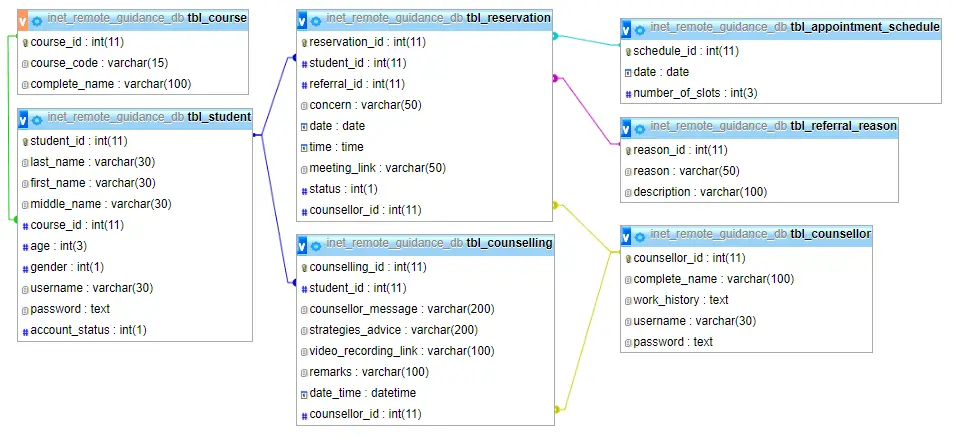
- COVID-19 Facilities Management Information System Database Design
COVID – 19 has put people in fear due to its capability of transmission when exposed to the virus. The health sectors and the government provide isolation facilities for COVID-19 patients to mitigate the spread and transmission of the virus. However, proper communication for the availability of the facilities is inefficient resulting to surge of patients in just one facility and some are transferred multiple times due to unavailability. The COVID-19 respondents must have an advance tools to manage the COVID-19 facilities where respondents can easily look for available facilities to cater more patients.
- Document Tracking System Database Design
The capstone project, “Document Tracking System” is purposely designed for companies and organizations that allow them to electronically store and track documents. The system will track the in/out of the documents across different departments. The typical way of tracking documents is done using the manual approach. The staff will call or personally ask for updates about the documents which are time-consuming and inefficient.
- Face Recognition Application Database Design
Technology has grown so fast; it changes the way we do our daily tasks. Technology has made our daily lives easier. The capstone project, entitled “Face Recognition Attendance System” is designed to automate checking and recording of students’ attendance during school events using face recognition technology. The system will work by storing the student’s information along with their photographs in a server and the system will detect the faces of the students during school events and match it and verify to record the presence or absence of the student.

- Digital Wallet Solution Database Design
The capstone project, named “Digital Wallet Solution,” is intended to allow people to store money online and make payments online. The digital wallet transactions accept a variety of currencies and provide a variety of payment gateways via which the user can pay for products and services. The system allows users to conduct secure and convenient online financial transactions. It will speed up payment and other financial processes, reducing the amount of time and effort required to complete them.
- Virtual Online Tour Application Database Design
The usage of technology is an advantage in the business industry, especially during this challenging pandemic. It allows businesses to continue to operate beyond physicality. The capstone project entitled “Virtual Online Tour Application” is designed as a platform to streamline virtual tours for clients. Any business industry can use the system to accommodate and provide their clients with a virtual experience of their business. For example, the tourist industry and real estate agencies can use the system to provide a virtual tour to their clients about the tourist locations and designs of properties, respectively.
- Invoice Management System Database Design
The researchers will create a system that will make it easier for companies to manage and keep track of their invoice information. The company’s sales records, payables, and total invoice records will all be electronically managed using this project. Technology is highly used for business operations and transactions automation. The capstone project, entitled “Invoice Management System” is designed to automate the management of the company’s invoice records. The said project will help companies to have an organized, accurate, and reliable record that will help them track their sales and finances.

- Vehicle Repair and Maintenance Management System Database Design
Information Technology has become an integral part of any kind of business in terms of automating business operations and transactions. The capstone project, entitled “Vehicle Repair and Maintenance Management System” is designed for vehicle repair and maintenance management automation. The said project will automate the vehicle garage’s operations and daily transactions. The system will automate operations such as managing vehicle repair and maintenance records, invoice records, customer records, transaction records, billing and payment records, and transaction records.
- Transcribe Medical Database Design
Information technology has made everything easier and simpler, including transcribing the medical diagnosis of patients. The capstone project, entitled “Medical Transcription Platform,” is designed to allow medical transcriptionists to transcribe audio of medical consultations and diagnose patients in a centralized manner. A medical transcriptionist is vital to keep accurate and credible medical records of patients and can be used by other doctors to know the patients’ medical history. The said project will serve as a platform where transcribed medical audios are stored for safekeeping and easy retrieval.
- Multi-branch Travel Agency and Booking System Database Design
The capstone project, entitled “Multi-Branch Travel Agency and Booking System,” is designed as a centralized platform wherein multiple travel agency branches are registered to ease and simplify inquiries and booking of travels and tour packages by clients. The said project will allow travel agencies to operate a business in an easy, fast manner considering the convenience and safety of their clients. The system will enable travel agencies and their clients to have a seamless online transaction.
- Pharmacy Stocks Management Database Design
The capstone project “Pharmacy Stocks Management System” allows pharmacies to manage and monitor their stocks of drugs electronically. The Pharmacy Stocks Management System will automate inventory to help ensure that the pharmacy has enough stock of medications and supplies to serve the needs of the patients.
- Loan Management with SMS Database Design
The capstone project entitled “ Loan Management System with SMS ” is an online platform that allows members to apply and request loan. In addition, they can also monitor their balance in their respective dashboard. Management of cooperative will review first the application for approval or disapproval of the request. Notification will be send through the SMS or short messaging service feature of the system.
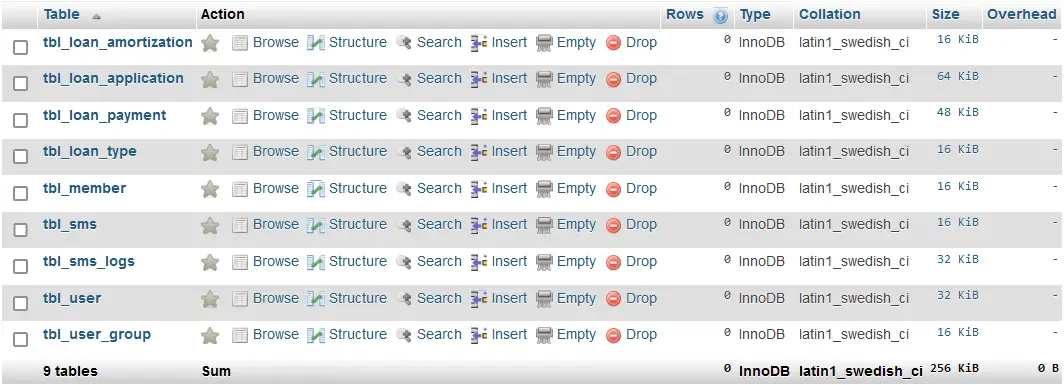
- Service Call Management System Database Design
The capstone project, entitled ” Service Call Management System,” is designed to transform service calls to a centralized platform. The said project would allow clients to log in and lodge calls to the tech support if they encountered issues and difficulties with their purchased products. The tech support team will diagnose the issue and provide them with the necessary actions to perform via a call to solve the problem and achieve satisfaction.
- File Management with Approval Process Database Design
The File Management System provides a platform for submitting, approving, storing, and retrieving files. Specifically, the capstone project is for the file management of various business organizations. This is quite beneficial in the management and organization of the files of every department. Installation of the system on an intranet is possible, as is uploading the system to a live server, from which the platform can be viewed online and through the use of a browser.
- Beauty Parlor Management System Database Design
The capstone project entitled “Beauty Parlour Management System” is an example of transactional processing system that focuses on the records and process of a beauty parlour. This online application will help the management to keep and manage their transactions in an organize, fast and efficient manner.
- Exam Management System Database Design
Information technology plays a significant role in the teaching and learning process of teachers and students, respectively. IT offers a more efficient and convenient way for teachers and students to learn and assess learnings. The capstone project, “Exam Management System,” is designed to allow electronic management of all the information about the exam questions, courses and subjects, and teachers and students. The said project is an all-in-one platform for student exam management.
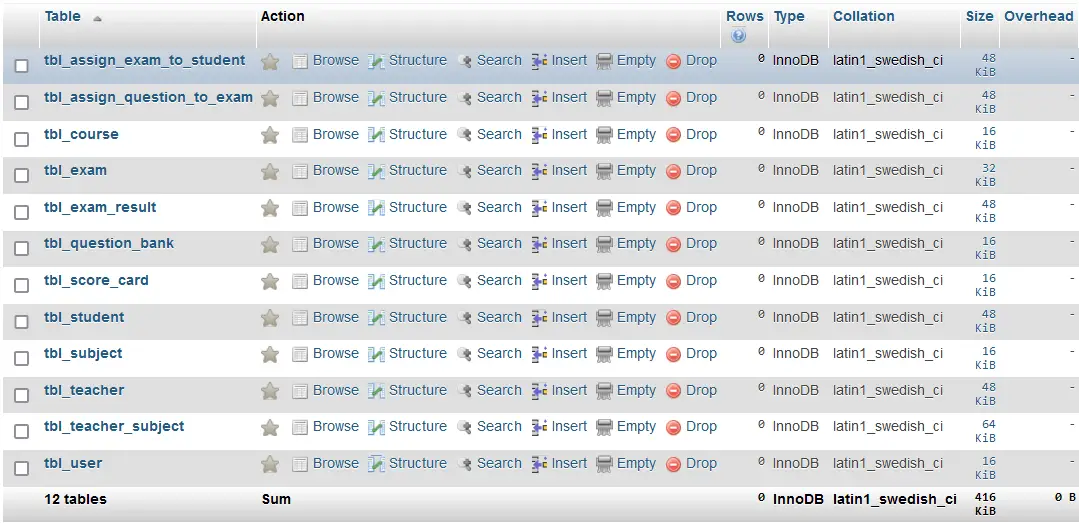
- Student and Faculty Clearance Database Design
The capstone project, entitled “Student and Faculty Clearance System,” is designed to automate students and faculty clearance processes. The approach is intended to make the clearance procedure easier while also guaranteeing that approvals are accurate and complete. The project works by giving every Department involved access to the application. The proposed scheme can eliminate the specified challenges, streamline the process, and verify the integrity and correctness of the data.
- Vehicle Parking Management System Database Design
The capstone project entitled “ Vehicle Parking Management System ” is an online platform that allows vehicle owners to request or reserve a slot for parking space. Management can accept and decline the request of reservation. In addition, payment option is also part of the system feature but is limited to on-site payment.
- Hospital Resources and Room Utilization Database Design
The capstone project, “Hospital Resources and Room Utilization Management System” is a system designed to streamline the process of managing hospital resources and room utilization. The said project is critical especially now that we are facing a pandemic, there is a need for efficient management of hospital resources and room management. The management efficiency will prevent a shortage in supplies and overcrowding of patients in the hospitals.

- Church Event Management System Database Design
The capstone project entitled “Church Event Management System” is designed to be used by church organizations in creating and managing different church events. The conventional method of managing church events is done manually where members of organizations will face difficulties due to physical barriers and time constraints.
- CrowdFunding Platform Database Design
Business financing is critical for new business ventures. In this study, the researchers concentrate on designing and developing a business financing platform that is effective for new startups. This capstone project, entitled “Crowdfunding Platform” is a website that allows entrepreneurs to campaign their new business venture to attract investors and crowdfund.
- Vehicle Franchising and Drivers Offense Software Database Design
The proposed software will be used to electronically process and manage vehicle and franchising and driver’s offenses. The proposed software will eliminate the manual method which involves a lot of paper works and consumes valuable amount of time. The proposed project will serve as a centralized platform was recording and paying for the offenses committed by the drivers will be processed. The system will quicken the process of completing transaction between the enforcers and the drivers. Vehicle franchising and managing driver offenses will be easy, fast and convenient using the system.
- Student Tracking Performance Database Design
The capstone project entitled “Student Academic Performance Tracking and Monitoring System” allows academic institutions to monitor and gather data about the academic performance of students where decisions are derived to further improve the students learning outcomes. Tracking and monitoring student’s performance serves a vital role in providing information that is used to assist students, teachers, administrators, and policymakers in making decisions that will further improve the academic performance of students.
- Webinar Course Management System Database Design
The capstone project, entitled “Webinar Course Management System,” is designed to automate managing webinar courses. The project aims to eliminate the current method, which is inefficient and inconvenient for parties involved in the webinar. A software development life cycle (SDLC) technique will be used by the researchers in order to build this project. They will gather a sample size of participating webinar members and facilitators to serve as respondents of the study.
- Online Birth Certificate Processing System with SMS Notification Database Design
The capstone project, “Online Birth Certificate Processing System with SMS Notification “ is an IT-based solution that aims to automate the process of requesting, verifying, and approving inquiries for original birth records. The system will eliminate the traditional method and transition the birth certificate processing into an easy, convenient, and efficient manner. The researchers will develop the project following the Software Development Life Cycle (SDLC) technique.
- Food Donation Services Database Design
Information technology plays a significant role in automating the operations of many companies to boost efficiency. One of these is the automation of food donation and distribution management. “Food Donation Services,” the capstone project, is intended to serve as a platform for facilitating transactions between food groups, donors, and recipients. Food banks will be able to respond to various food donations and food assistance requests in a timely and effective manner as a result of the project.
- COVID Profiling Database Design
The capstone project “City COVID-19 Profiling System with Decision Support” is designed to automate the process of profiling COVID-19 patients. The project will empower local health officers in electronically recording and managing COVID-19 patient information such as symptoms, travel history, and other critical details needed to identify patients. Manual profiling is prone to human mistakes, necessitates a lot of paperwork, and needs too much time and effort from the employees.
- Evacuation Center Database Design
Calamities can have a significant impact on society. It may result in an enormous number of people being evacuated. The local government unit assigned evacuation centers to provide temporary shelter for people during disasters. Evacuation centers are provided to give temporary shelter for the people during and after a calamity. Evacuation centers can be churches, sports stadium community centers, and much more that are capable to provide emergency shelter.
- QR Code Fare Payment System Database Design
The capstone project, “QR Code Fare Payment System” is designed to automate the procedure of paying for a fare when riding a vehicle. Passengers will register in the system to receive their own QR code, which they will use to pay for their fares by scanning in the system’s QR code scanning page. The project will enable cashless fare payment.
- Web Based Psychopathology Diagnosis System Database Design
The capstone project entitled “Web-Based Psychopathology Diagnosis System” is designed for patients and medical staff in the field of psychopathology. The system will be a centralized platform to be used by patients and psychopathologists for consultations. The said project will also keep all the records electronically. Mental health is important. Each individual must give importance to their mental health by paying attention to it and seek medical advice if symptoms of mental disorders and unusual behavior occur.
- Service Marketplace System Database Design
The capstone project, “Services Marketplace System” is designed to serve as a centralized platform for marketing and inquiring about different services. The system will serve as a platform where different service providers and customers will have an automated transaction. Technology made it easier for people to accomplish daily tasks and activities. In the conventional method, customers avail themselves of services by visiting the shop that offers their desired services personally.
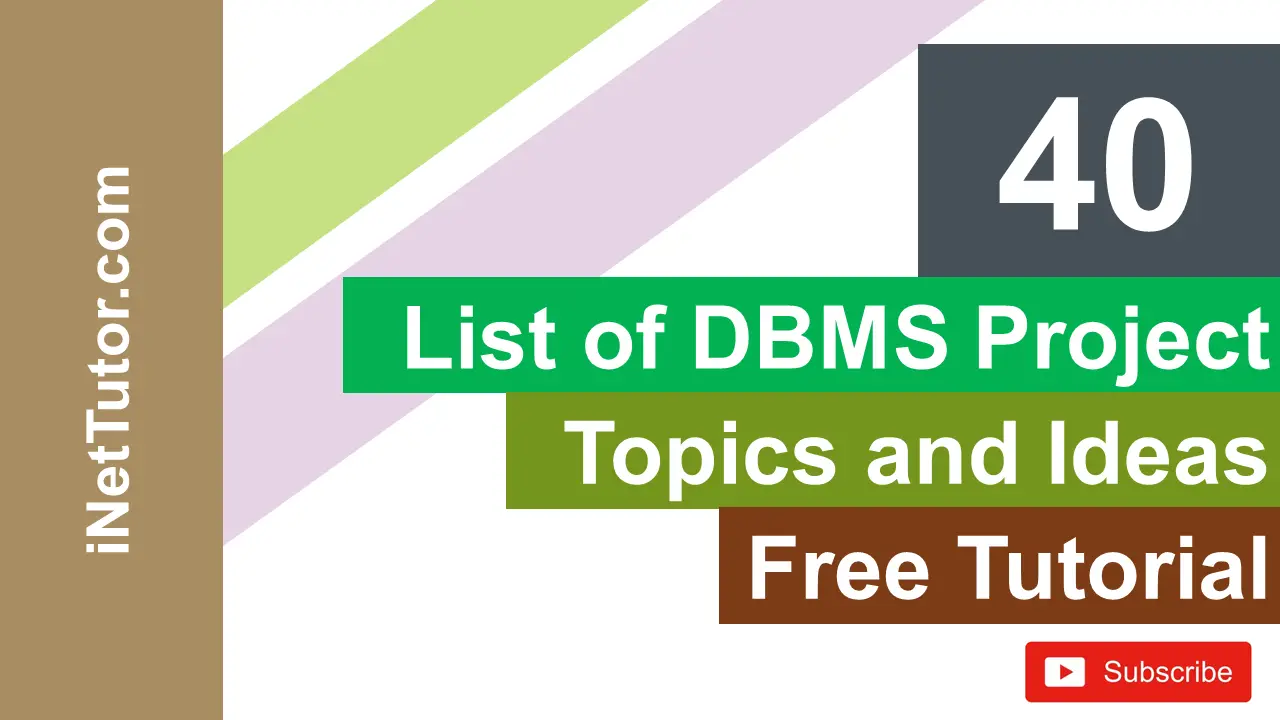
- Fish Catch System Database Design
The capstone project, entitled “Fish Catch Monitoring System” will automate the process of recording and monitoring fish catches. The said project is intended to be used by fisherman and fish markets to accurately record fish catches and will also keep the records electronically safe and secure.
- Complaints Handling Management System Free Template Database Design
The capstone project, “Complaint Handling Management System” is a system designed to help educational institutions to handle and manage complaints electronically. The system will improve the response time of the school’s management in addressing the complaints of the students, parents, staff, and other stakeholders.
- Senior Citizen Information System Free Template Database Design
The system will replace the manual method of managing information and records of the senior citizen to an electronic one. The system will serve as a repository of the record of the senior citizen within the scope of a specific local government unit. By using the system, paper works will be lessened and human errors in file handling will be avoided. The system is efficient enough to aid in managing and keeping the records of the senior citizens in the different barangay.
- Online and SMS-Based Salary Notification Database Design
The “Online and SMS Based Salary Notification” is a capstone project intended to be used by companies and employees to automate the process of notifying salary details. The application will work by allowing the designated company encoder to encode details of salary and the employees to log in to his/her account in the application and have access to the details of his/her salary. One of the beauties of being employed is being paid. Employers manage the employee’s salary and are responsible to discuss with the employees the system of the salary and deductions.
- Maternal Records Management Database Design
The capstone project, “Maternal Records Management System” is a system that automates the process of recording and keeping maternal records. The said project will allow maternity clinics to track and monitor their patients’ records from pregnancy to their baby’s immunization records.
- Online Complaint Management System Database Design
Online Complaint Management System is a capstone project that is design to serve as a platform to address complaints and resolve disputes. The system provides an online way of resolving problems faced by the public or people within the organization. The system will make complaints easier to coordinate, monitor, track and resolve.
- Online Donation Database Design
The capstone project , “Online Donation Platform for DSWD” is an online platform for giving and asking donations in the Department of Social Welfare and Development (DSWD). The system will be managed by the staffs of the DSWD to verify donors and legible beneficiaries electronically. The system will have an SMS feature to notify the donors and beneficiaries about the status of their request.
- OJT Timesheet Monitoring System using QR Code Database Design
The capstone project, “OJT Timesheet Monitoring System using QR Code” allows employer to automate timesheet of each trainee for easy monitoring. The system will be used by the on-the-job trainees to serve as their daily time in and out using the QR code generated by the system. The entire system will be managed by the administrator.
Technology is attributed with driving change in a wide range of enterprises and institutions. Because of information technology, the world has altered dramatically. It is difficult to imagine an industry or organization that has not benefited from technology advances. In these businesses, the most common role of IT has been to automate numerous procedures and transactions in order to increase efficiency and improve people’s overall experience and satisfaction. The aforementioned capstone project ideas will be useful in a range of sectors. It will aid in enhancing operational efficiency as well as the services provided to the project’s users.
You may visit our Facebook page for more information, inquiries, and comments. Please subscribe also to our YouTube Channel to receive free capstone projects resources and computer programming tutorials.
Hire our team to do the project.
Related Topics and Articles:
- List of Completed Capstone Projects with Source code
- 27 Free Capstone Project Ideas and Tutorials
- 16 Lists of Free Capstone Project Ideas in Flutter
- 39 Capstone Project Ideas for IT Related Courses
- 50+ Free Download Web Based System Template in Bootstrap
- COVID-19 Capstone and Research Free Project Ideas 2022
- Capstone Project Ideas for IT and IS January 2022
- Capstone Project Ideas for IT and IS December 2021
- IT and IS Capstone Project Free Resources November 2021
- List of 45 IT Capstone Project on Crime and Disaster Management
Post navigation
- QR Code Generator in PHP Free Source code and Tutorial
Similar Articles
Mysql tutorial – mysql update command.

Loan Management System with SMS Database Design
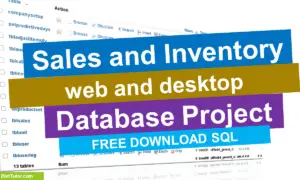
Sales and Inventory Database Project

Searchable database for Alzheimer's research
Comprehensive, user-friendly repository offers broader spectrum of alzheimer's datasets.
A searchable database is now ready to help study Alzheimer's disease.
Neuroscience and biomedical informatics researchers at The Ohio State University Wexner Medical Center and College of Medicine created the comprehensive, user-friendly repository.
The free database -- known as ssREAD -- is outlined in a manuscript published online in Nature Communications .
Alzheimer's disease is the most common cause of dementia, accounting for up to 80% of cases. An estimated 6.7 million Americans who are age 65 and older are living with Alzheimer's dementia today, according to the Alzheimer's Association's 2023 Alzheimer's disease facts and figures report.
This database will help study the pathology of Alzheimer's disease. Pathology examines the cause, development, structural/functional changes and natural history associated with diseases.
Molecular signatures underlying Alzheimer's disease pathology have been increasingly explored through single-cell and single-nucleus RNA-sequencing (scRNA-seq & snRNA-seq) and spatial transcriptomics.
"These technologies have cast fresh light on the exploration of Alzheimer's disease pathogenesis and sex difference at the cellular and molecular levels. Our ssREAD repository offers a broader spectrum of Alzheimer's disease-related datasets, with an optimized analytical pipeline and improved usability," said study co-corresponding author Hongjun "Harry" Fu, PhD, assistant professor of neuroscience at Ohio State.
The database encompasses 277 integrated datasets from 67 Alzheimer's disease-related scRNA-seq & snRNA-seq studies, totaling 7,332,202 cells. The repository also includes 381 spatial transcriptomics samples from 85 human and mouse studies.
- Detailed annotations including cell types and spatial layers
- Differential gene expressions and functional enrichment analysis
- Spatially variable genes and deconvolution with single-cell datasets
Interactive visualizations
User-friendly web server to provide comprehensive analysis interpretations and filters support multiple selections
- Scatter plots for clusters, cell types, and spatial layers
- Feature plots and violin plots for gene expression profile
- Real-time gene set enrichment analysis
"We are closing the gap for researchers by creating this specialized database. Integrating these diverse datasets and conditions will be invaluable for researchers studying the complex landscape of Alzheimer's disease," said Qin Ma, PhD, professor in Ohio State's department of biomedical informatics.
- Alzheimer's Research
- Healthy Aging
- Diseases and Conditions
- Alzheimer's
- Disorders and Syndromes
- Dementia with Lewy bodies
- Alzheimer's disease
- Cognitive neuroscience
- Neuroscience
- Neurobiology
- Urinary incontinence
- Neural development
- Stem cell treatments
Story Source:
Materials provided by Ohio State University Wexner Medical Center . Note: Content may be edited for style and length.
Journal Reference :
- Cankun Wang, Diana Acosta, Megan McNutt, Jiang Bian, Anjun Ma, Hongjun Fu, Qin Ma. A single-cell and spatial RNA-seq database for Alzheimer’s disease (ssREAD) . Nature Communications , 2024; 15 (1) DOI: 10.1038/s41467-024-49133-z
Cite This Page :
Explore More
- 'Missing' Early Sea Sponges Discovered
- Younger Classmates Diagnosed With ADHD
- Upending Theory of Milky Way Formation
- Black Holes a Byproduct of Dark Matter?
- Marine Cyanobacteria Can Communicate
- 'Tweezer-Like' Bionic Tools Feel Right
- Odd Planet-Forming Disks Around Low-Mass Stars
- Toward Blood Stem Cell Self-Renewal
- Restored Hearing and Speech in Kids Born Deaf
- Babies and AI Both Learn Key Foundation Models
Trending Topics
Strange & offbeat.
LGBTQI+ People and Substance Use

- Research has found that sexual and gender minorities, including lesbian, gay, bisexual, transgender, queer, and intersex people (LGBTQI+), have higher rates of substance misuse and substance use disorders than people who identify as heterosexual. People from these groups are also more likely to enter treatment with more severe disorders.
- People in LGBTQI+ communities can face stressful situations and environments like stigma and discrimination , harassment, and traumatic experiences . Coping with these issues may raise the likelihood of a person having substance use problems.
- NIDA supports research to help identify the particular challenges that sexual and gender minority people face, to prevent or reduce substance use disorders among these groups, and to promote treatment access and better health outcomes.
Latest from NIDA

A Plan to Address Racism in Addiction Science
Find more resources on lgbtqi+ health.
- Hear the latest approaches in treatment and care from experts in the fields of HIV and SUD in this NIDA video series, “ At the Intersection .”
- See the Stigma and Discrimination Research Toolkit from the National Institute of Mental Health.
Numbers, Facts and Trends Shaping Your World
Read our research on:
Full Topic List
Regions & Countries
- Publications
- Our Methods
- Short Reads
- Tools & Resources
Read Our Research On:
- Israeli Views of the Israel-Hamas War
Jewish Israelis and Arab Israelis see the war very differently
Table of contents.
- Views of the Israeli military response against Hamas
- Attitudes toward Israel’s war cabinet
- Current concerns about the war
- Confidence in Biden
- Views of how Biden is handling the Israel-Hamas war
- Who is Biden favoring in the conflict, or is he striking the right balance?
- Views of the U.S.
- Who Israelis want to play a role in diplomatically resolving the war
- Success against Hamas
- Israel’s future national security
- The future of Gaza
- Views of Palestinian leaders
- Palestinian statehood and coexistence
- Acknowledgments
- Methodology

This Pew Research Center analysis covers Israeli attitudes on the Israel-Hamas war, including opinions on how it’s being conducted, the country’s future, Israeli political leaders and the United States’ role in the conflict.
The data is from a survey of 1,001 Israeli adults conducted face-to-face from March 3 to April 4, 2024. Interviews were conducted in Hebrew and Arabic, and the survey is representative of the adult population ages 18 and older, excluding those in East Jerusalem and non-sanctioned outposts. (The survey also did not cover the West Bank or Gaza.) The survey included an oversample of Arabs in Israel. It was subsequently weighted to be representative of the Israeli adult population with the following variables: gender by ethnicity, age by ethnicity, education, region, urbanicity and probability of selection of respondent.
Here are the questions used for the report, along with responses, and the survey methodology .

A new Pew Research Center survey finds that 39% of Israelis say Israel’s military response against Hamas in Gaza has been about right, while 34% say it has not gone far enough and 19% think it has gone too far.
According to the survey, conducted in March and early April, roughly two-thirds of Israelis are also confident that Israel will either probably (27%) or definitely (40%) achieve its goals in the war against Hamas. Still, majorities of Israeli adults are worried about aspects of the ongoing war:
- 61% say they are extremely or very concerned about the war expanding into other countries in the region.
- 68% say they are extremely or very concerned about the war going on for a long time.
When it comes to what should happen after the war, there is less consensus. A 40% plurality of Israelis think Israel should govern the Gaza Strip. Smaller shares think Gazans should decide who governs (14%) or would like to see a Palestinian Authority national unity government either with (6%) or without (12%) President Mahmoud Abbas (also known as Abu Mazen) in leadership.
Separately, 26% of Israelis think a way can be found for Israel and an independent Palestinian state to coexist peacefully with each other – down from 35% who said the same last year , prior to the war, and about half as many as took that position when the question was first asked in 2013.
Research in the West Bank and Gaza
Pew Research Center has polled the Palestinian territories in previous years, but we were unable to conduct fieldwork in Gaza or the West Bank for our March/April 2024 survey due to security concerns. We are actively investigating possibilities for both qualitative and quantitative research on public opinion in the region and hope to be able to provide more data in the coming months.
These are among the key findings of a new survey of 1,001 Israelis, conducted via face-to-face interviews from March 3 to April 4, 2024.
The survey also asked Israelis about the U.S. role in the conflict. (It was conducted before U.S. President Joe Biden took a tougher stance toward Israel in the wake of an Israeli airstrike that killed seven World Central Kitchen aid workers. And it predates Biden’s declaration that the U.S. would not provide offensive weapons to Israel in the event of a Rafah invasion as well as the subsequent Israeli strikes in Rafah .)
The survey shows:
- 60% of Israelis disapprove of the way Biden is handling the Israel-Hamas war.
- 41% think Biden is striking the right balance between Israelis and Palestinians. Still, 27% of Israelis say he is favoring Israelis too much, while roughly the same share (25%) say he favors Palestinians too much.
- Most Israelis express confidence in Biden to handle world affairs and have a favorable view of the U.S. But ratings of both Biden and the U.S. have fallen at least 10 percentage points since last year. (For more on this, read “How Israelis and Americans view one another and the U.S. role in the Israel-Hamas war.” )

Nonetheless, a large majority (72%) still want the U.S. to play a major role in diplomatically resolving the war – more than say the same about any of the other countries or organizations asked about, including Egypt (45%), Saudi Arabia (29%), Qatar (27%) and the United Nations (24%).
Arab and Jewish Israelis

People across Israeli society perceive the war in vastly different ways, depending on their views of the current leadership, how they identify ideologically, their religious backgrounds and other factors. One of the starkest divides is between Arab and Jewish Israelis:
- Arab Israelis are less likely than Jewish Israelis to think Israel will succeed in achieving its war aims (38% vs. 76%) and less optimistic when thinking about the future of the country’s national security (21% vs. 63%).
- Israeli Arabs are much more likely than Jews to say the country’s military response has gone too far (74% vs. 4%).
- Almost no Israeli Arabs (3%) want Israel to govern the Gaza Strip after the war, while half of Israeli Jews think it should do so. A plurality of Arabs would like the people who live in Gaza to decide who governs (37%), while only 8% of Jews prefer this outcome.
- Arab Israelis have much less favorable views of the U.S. than Jewish Israelis do (29% vs. 90%), as well as less confidence in Biden (21% vs. 66%). They are also much more likely to disapprove of Biden’s handling of the war (86% vs. 53%) and to think he favors Israelis too much (86% vs. 11%).
- Although a majority of Arabs (63%) want the U.S. to play a major role in diplomatically resolving the war between Israel and Hamas, an even greater share of Jewish Israelis (74%) want this. And roughly two-thirds of Arabs are open to Qatar and Egypt playing a major role, while only about four-in-ten Jews or fewer say the same.
- Roughly nine-in-ten Arabs (92%) have a negative view of Israeli Prime Minister Benjamin Netanyahu, compared with around half of Jews (48%). Views of the two other war cabinet members , Benny Gantz and Yoav Gallant, are also divided along ethnic lines. (The survey was conducted before Gantz threatened to leave the war cabinet .)
In many cases, there are also large ideological differences, with Israelis who describe themselves as being on the left generally more critical of Israel’s war response, less optimistic about its success and more critical of the U.S. than those on the right. There also tend to be differences among Israeli Jews based on how religiously observant they are. For more on how we looked at these differences, refer to the box below.
Jewish religious groups in Israel: Haredim, Datiim, Masortim and Hilonim
Nearly all Israeli Jews identify as either Haredi (commonly translated as “ultra-Orthodox”), Dati (“religious”), Masorti (“traditional”) or Hiloni (“secular”). The spectrum of religious observance in Israel – on which Haredim are generally the most religious and Hilonim the least – does not always line up perfectly with Israel’s political spectrum. On some issues, including those pertaining to religion in public life, there is a clear overlap: Haredim are furthest to the right, and Hilonim are furthest to the left, with Datiim and Masortim in between. But on other political issues, including those related to the Israeli-Palestinian conflict and views of the United States, differences between religious groups do not always mirror those between people at different points on the ideological spectrum. Because of sample size considerations, we combine Haredim and Datiim for analysis in this report.
For more information on the different views of these religious groups, read the Center’s 2016 deep dive on the topic, “Israel’s Religiously Divided Society.”
Sign up for our weekly newsletter
Fresh data delivery Saturday mornings
Sign up for The Briefing
Weekly updates on the world of news & information
- War & International Conflict
- World Leaders
How Americans and Israelis view one another and the U.S. role in the Israel-Hamas war
Growing partisan divisions over nato and ukraine, a growing share of americans have little or no confidence in netanyahu, what are americans’ top foreign policy priorities, rising numbers of americans say jews and muslims face a lot of discrimination, most popular, report materials.
1615 L St. NW, Suite 800 Washington, DC 20036 USA (+1) 202-419-4300 | Main (+1) 202-857-8562 | Fax (+1) 202-419-4372 | Media Inquiries
Research Topics
- Email Newsletters
ABOUT PEW RESEARCH CENTER Pew Research Center is a nonpartisan fact tank that informs the public about the issues, attitudes and trends shaping the world. It conducts public opinion polling, demographic research, media content analysis and other empirical social science research. Pew Research Center does not take policy positions. It is a subsidiary of The Pew Charitable Trusts .
© 2024 Pew Research Center
- Book a Speaker
Introducing the SHRM Civility Index
Just how much is incivility affecting your organization? New SHRM research highlights the urgent need for workplace civility, with U.S. workers facing millions of acts of incivility per day.
The Importance of Civility in the U.S.
Practicing civil behavior establishes a safe and empathetic environment where individuals can contribute their best ideas, knowing they will be heard and valued.
Civility is more than making others feel comfortable; it's about creating a dynamic, diverse, and productive workplace where everyone can thrive.
161 million people work in the U.S. every day.
U.S. workers collectively experience 171 million acts of incivility per day.
Over half of U.S. workers believe our society is uncivil.
SHRM is leading the change starting with 1 million civil conversations.
Every voice makes a difference. Have you been civil today?
Civility Starts With You
SHRM is committed to bridging this divide and fostering inclusivity in the workplace through the 1 Million Civil Conversations initiative. Explore resources for integrating awareness of civility in your organization.
Start the Conversation
Building trust and creating a safe space for others to share their thoughts can begin with you. Keep these cards in your back pocket to turn discord into dialogue and conflict into opportunity.
Join the Conversation
We are all responsible for championing better workplaces through open and civil dialogue. Share your commitment and engage with us on social media using:
#CivilityAtWork
SHRM + Civility
Civility at Work
Civility in Action
Civility Defined
The State of Civility in the Workplace
Our research shows the importance of navigating the delicate balance of encouraging open dialogue while maintaining respect for individual differences as we aim to build a more respectful, understanding, and collaborative world of work.
Nearly two-thirds of U.S. workers have experienced or witnessed incivility in their workplace within the past month.
Source: SHRM Research on Civility, Conflict and Expression, February 2024
One-third of U.S. workers believe workplace conflict will increase over the next 12 months.
Insightful Content, Expert Perspectives

How to Manage Political Discussions in the Workplace
Many U.S. workers are bracing for more political discussions at home and work. Half of employees believe workplace political discussions hurt the work environment, according to new data.

Black Employees Discuss Effects of Hostile Work Environments
Surveys show that Black employees often face workplace hostility that impacts their physical, mental and emotional health. Several Black professionals shared their own experiences and the role that civility plays in creating a more inclusive workplace.

Allyship as a Path to Equality
Scholar and women’s rights activist Rangita de Silva de Alwis shares how allyship can provide women with new leadership opportunities in the workplace.

8 Tips for Avoiding Conflict in Email
Much of the conflict in workplaces plays out over email and text, often due to misunderstandings about tone and intent of the communications. Experts offer tips on keeping email messages civil and understandable.

SHRM Research: HR Strains to Meet Needs of Companies Stressed by Inflation
Inflation and talent shortages continues to be a top concern for organizations in 2024, and HR is stretched thin trying to recruit and retain top talent while reducing costs and increasing efficiencies.

Antisemitism Soars, Creating ‘Unprecedented’ Threat
Antisemitism has skyrocketed in recent months, according to new data released by the Anti-Defamation League. Could workplace civility play a role in reducing such hate crimes?

Get the Tea on Civility
Get the latest updates on civility and other important workplace issues.
Recommended by SHRM
HR Daily Newsletter
New, trends and analysis, as well as breaking news alerts, to help HR professionals do their jobs better each business day.
Success title
Success caption
This site uses cookies to optimize functionality and give you the best possible experience. If you continue to navigate this website beyond this page, cookies will be placed on your browser. To learn more about cookies, click here .

IMAGES
VIDEO
COMMENTS
In this blog post, we will introduce you to 10 current database research topic ideas that are likely to be at the forefront of the field in 2024. From blockchain-based database systems to real-time data processing with in-memory databases, these topics offer a glimpse into the exciting future of database research.
If you're still unsure about how to find a quality research topic, check out our Research Topic Kickstarter service, which is the perfect starting point for developing a unique, well-justified research topic. A comprehensive list of data science and analytics-related research topics. Includes free access to a webinar and research topic evaluator.
9.) Data Visualization. Data visualization is an excellent research topic in data science because it allows us to see our data in a way that is easy to understand. Data visualization techniques can be used to create charts, graphs, and other visual representations of data.
99+ Data Science Research Topics: A Path to Innovation. In today's rapidly advancing digital age, data science research plays a pivotal role in driving innovation, solving complex problems, and shaping the future of technology. Choosing the right data science research topics is paramount to making a meaningful impact in this field.
These 15 topics will help you to dive into interesting research. You may even build on research done by other scholars. Evaluate the data mining process. The influence of the various dimension reduction methods and techniques. The best data classification methods. The simple linear regression modeling methods.
Berkeley also gave birth to many of the most widely-used open source systems in the field including INGRES, Postgres, BerkeleyDB, and Apache Spark. Today, our research continues to push the boundaries of data-centric computing, taking the foundations of data management to a broad array of emerging scenarios.
The contents of these databases are only partially included in HOLLIS. To make sure you're really seeing everything, you need to search in multiple places. Use Database Search to identify and connect to the best databases for your topic. In addition to digital content, you will find specialized search engines used in specific scholarly domains.
Having understood the 8V's of big data, let us look into details of research problems to be addressed. General big data research topics [3] are in the lines of: Scalability — Scalable Architectures for parallel data processing; Real-time big data analytics — Stream data processing of text, image, and video
Databases can be used to store research data, for example in protein databases and genetic databases, and they organise data into standard formats so that information can readily be obtained. Featured
The book presents the latest research ideas and topics on how to enhance current database systems, improve information storage, refine existing database models, and develop advanced applications. It provides insights into important developments in the field of database and database management. With emphasis on theoretical issues regarding databases and database management, the book describes ...
Advanced Topics in Database Research (Advances in Database Research Series) (Advances in Database Research Series) May 2006. May 2006. Read More. Author: Keng Siau; Publisher: IGI Global; 701 E. Chocolate Ave., Hershey, PA; United States; ISBN: 978-1-59140-935-9. Published: 01 May 2006. Available at Amazon. Save to Binder Binder. Save to Binder.
Advanced Topics and Future Trends in Database Technologies can be taken for academic credit as part of CU Boulder's Master of Science in Data Science (MS-DS) degree offered on the Coursera platform. The MS-DS is an interdisciplinary degree that brings together faculty from CU Boulder's departments of Applied Mathematics, Computer Science ...
To recap, the "Big 5" assessment criteria include: Topic originality and novelty. Value and significance. Access to data and equipment. Time requirements. Ethical compliance. Be sure to grab a copy of our free research topic evaluator sheet here to fast-track your topic selection process.
Companion guide to the Library 101: "How-To Library" Beginner Research Series. This guide will give tips on choosing a research topic and developing key terms. Databases well suited to helping you find a topic!
Data science is a field that crosscuts many research area of computer science, such as artificial intelligence, machine learning, data mining, databases, and information systems. Our research falls into the last two of these areas and aims at supporting data science at the system level. Data science requires the management of new types of data ...
Organize your papers in one place. Try Paperpile. 1. Scopus. Scopus is one of the two big commercial, bibliographic databases that cover scholarly literature from almost any discipline. Besides searching for research articles, Scopus also provides academic journal rankings, author profiles, and an h-index calculator. 2.
The research in database systems education has evolved over the years with respect to modern contents influenced by technological advancements, supportive tools to engage the learners for better learning, and improvisations in teaching and assessment methods. ... Also, other database topics such as transaction management, application ...
113 Great Research Paper Topics. One of the hardest parts of writing a research paper can be just finding a good topic to write about. Fortunately we've done the hard work for you and have compiled a list of 113 interesting research paper topics. They've been organized into ten categories and cover a wide range of subjects so you can easily ...
General article databases are a good place to start since they contain resources from a variety of disciplines. Simply choose one of those databases and type in your keywords to begin to find articles. Browse for databases by subject using the All Subjects dropdown for topics such as engineering, sociology, or history if you want to dig deeper ...
Databases contain references to articles using both standard British and American English spellings. Both need to be searched as free-text terms in the title and abstract. ... The search team then combines knowledge about databases with knowledge about the research topic, which is an important condition to create the highest quality searches.
Overview. Data management systems are the corner-stone of modern applications, businesses, and science (including data). If you were excited by the topics in 4111, this graduate level course in database systems research will be a deep dive into classic and modern database systems research.
ERIC is a free database that the United States Department of Education sponsors to share resources for teachers and other academic professionals. It also has a thesaurus built into the database, which individuals can use while writing their research papers. 6. ScienceDirect.
In the database, we found 131 AI tools useful for literature reviews, summaries or writing. As many as 146 AI tools are useful for data collection or analysis, and 108 are useful for research ...
Technology made it easier for people to accomplish daily tasks and activities. In the conventional method, customers avail themselves of services by visiting the shop that offers their desired services personally. 40 List of DBMS Project Topics and Ideas. Fish Catch System Database Design.
Ohio State University Wexner Medical Center. (2024, June 6). Searchable database for Alzheimer's research. ScienceDaily. Retrieved June 7, 2024 from www.sciencedaily.com / releases / 2024 / 06 ...
Research has found that sexual and gender minorities, including lesbian, gay, bisexual, transgender, queer, and intersex people (LGBTQI+), have higher rates of substance misuse and substance use disorders than people who identify as heterosexual. People from these groups are also more likely to enter treatment with more severe disorders.
This Pew Research Center analysis covers Israeli attitudes on the Israel-Hamas war, including opinions on how it's being conducted, the country's future, Israeli political leaders and the United States' role in the conflict. The data is from a survey of 1,001 Israeli adults conducted face-to-face from March 3 to April 4, 2024.
1/3. One-third of U.S. workers believe workplace conflict will increase over the next 12 months. Source: SHRM Research on Civility, Conflict and Expression, February 2024. See the Research.
Global data and statistics, research and publications, and topics in poverty and development. WORK WITH US. Jobs, procurement, training, and events. ... Data and research help us understand these challenges and set priorities, share knowledge of what works, and measure progress. Data & Research. Open Data;